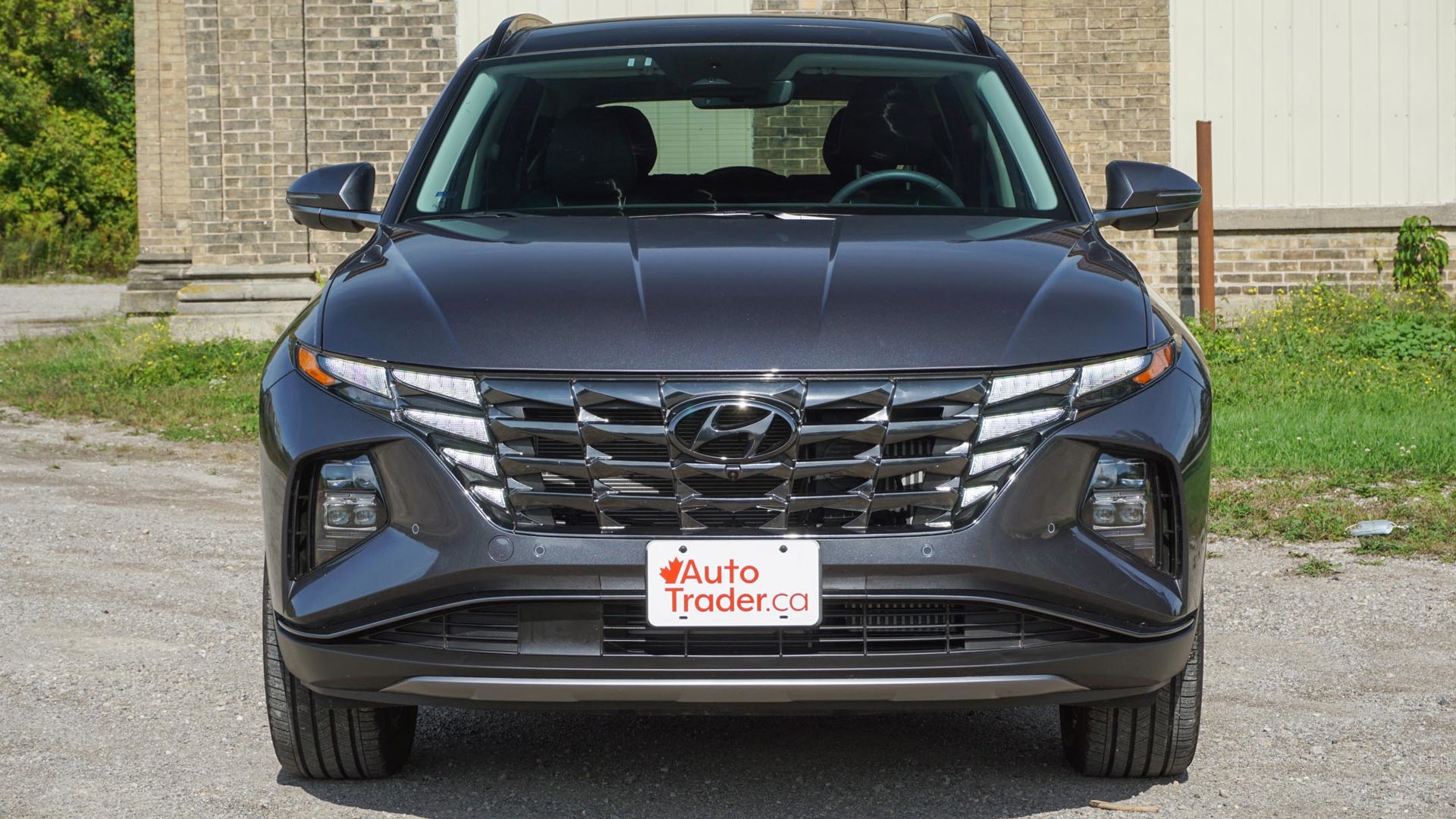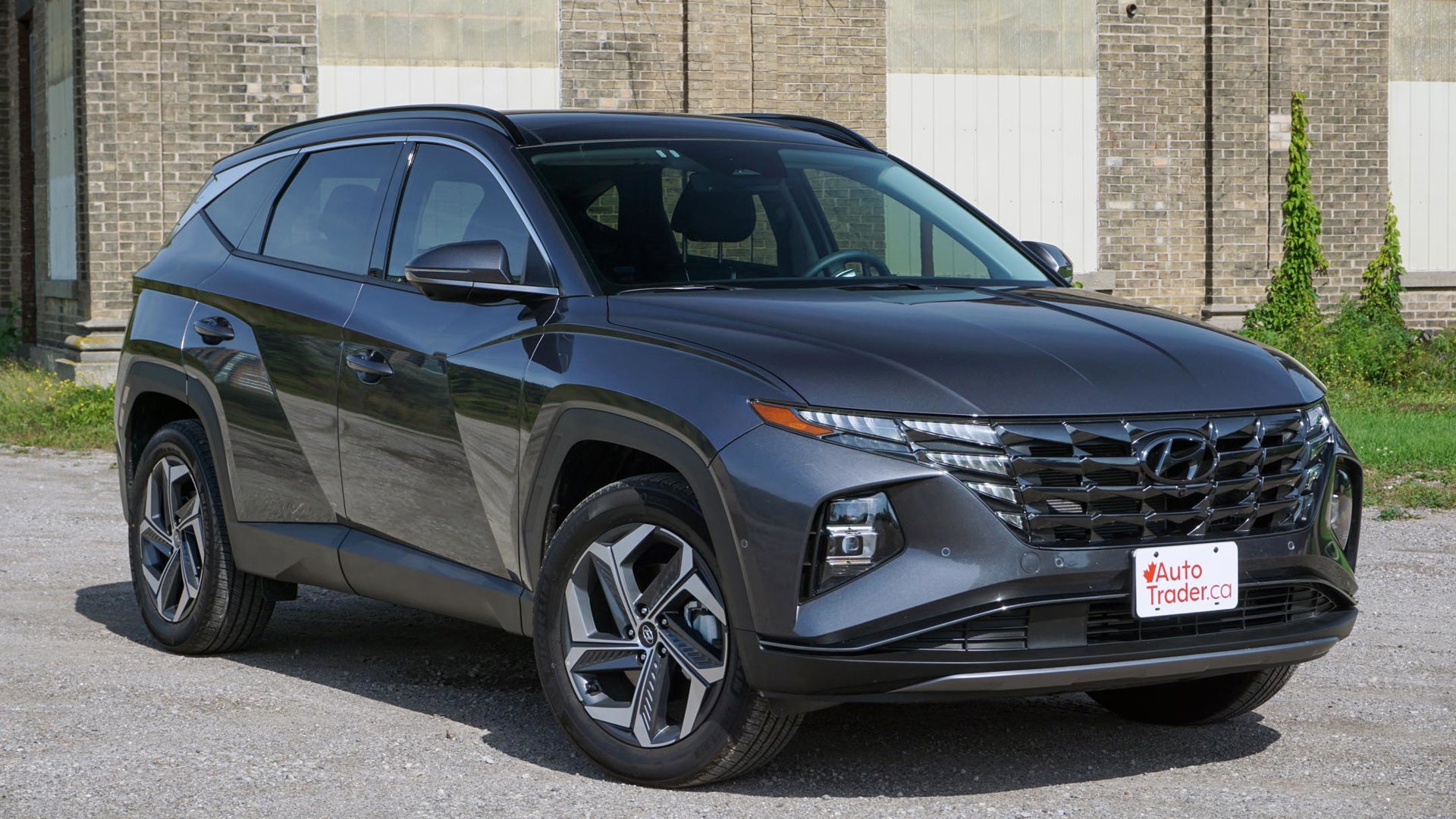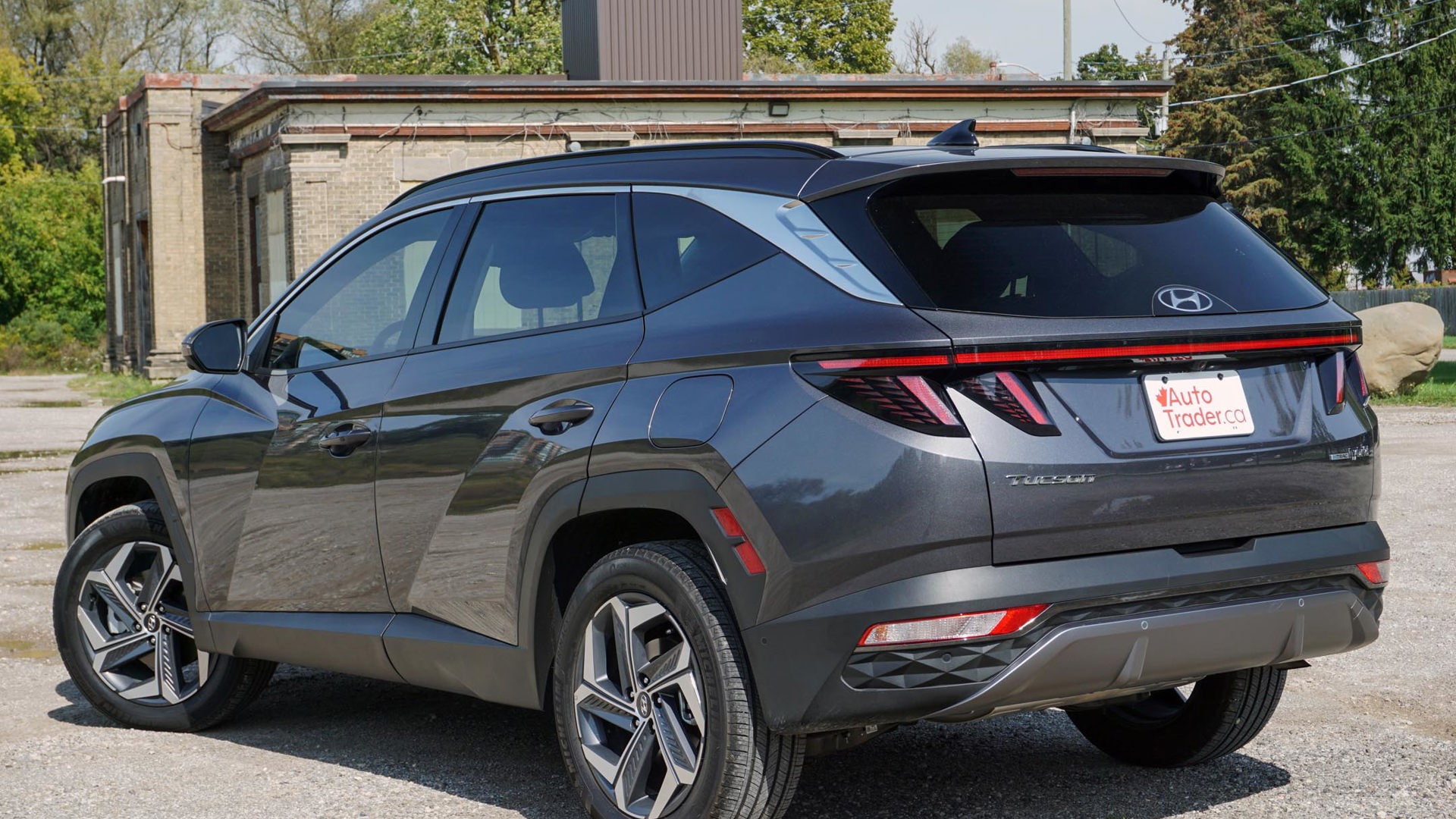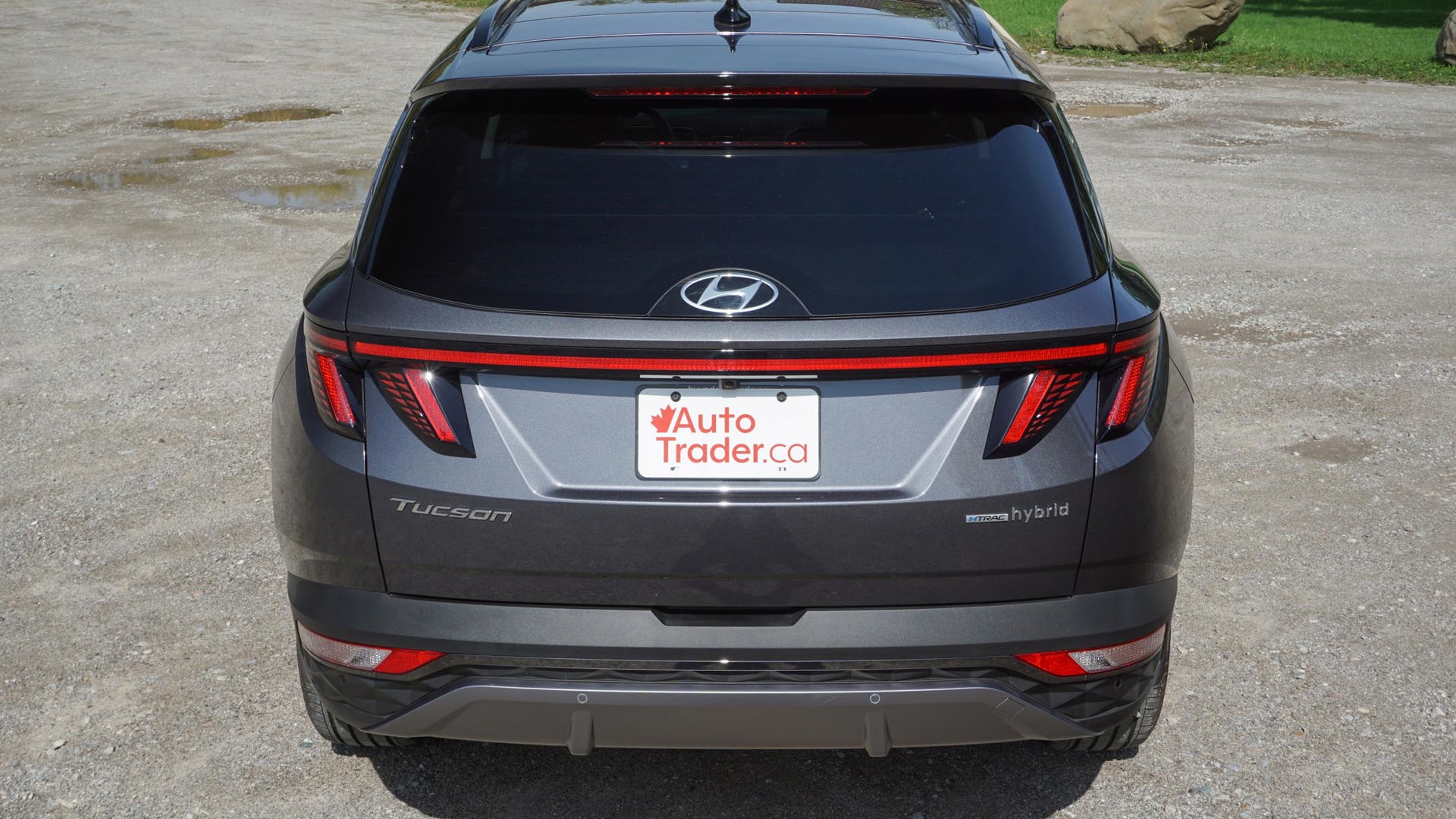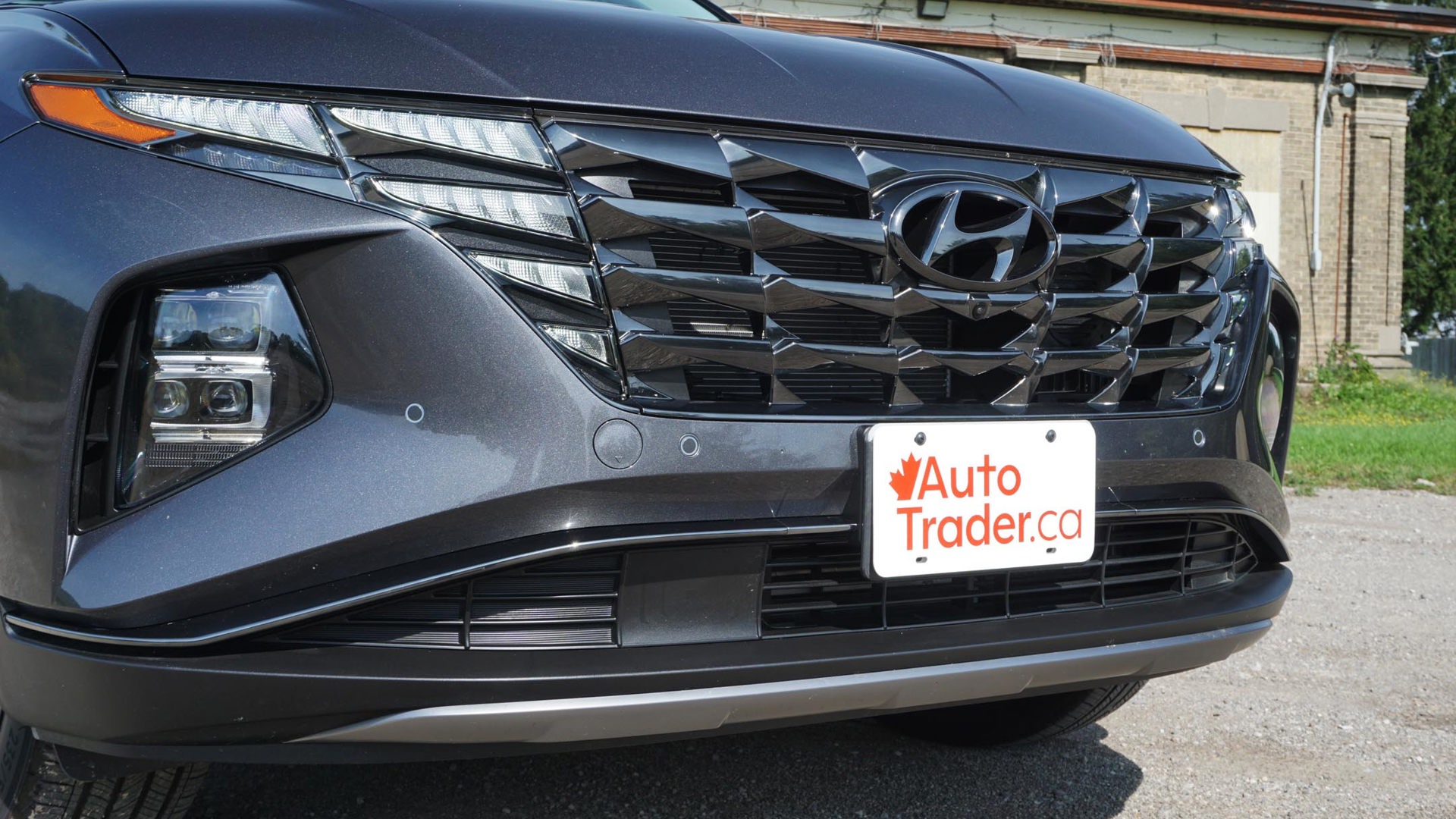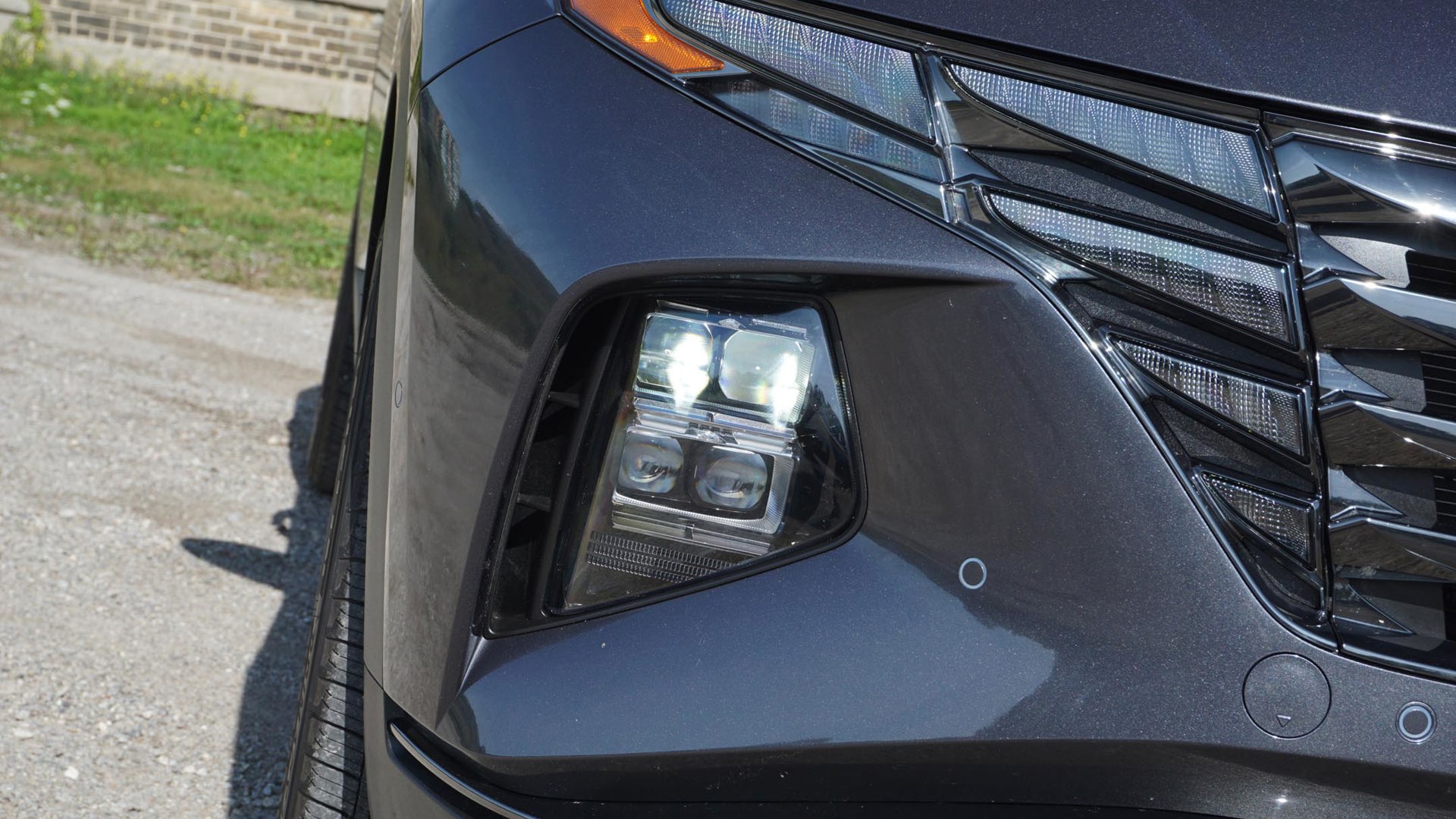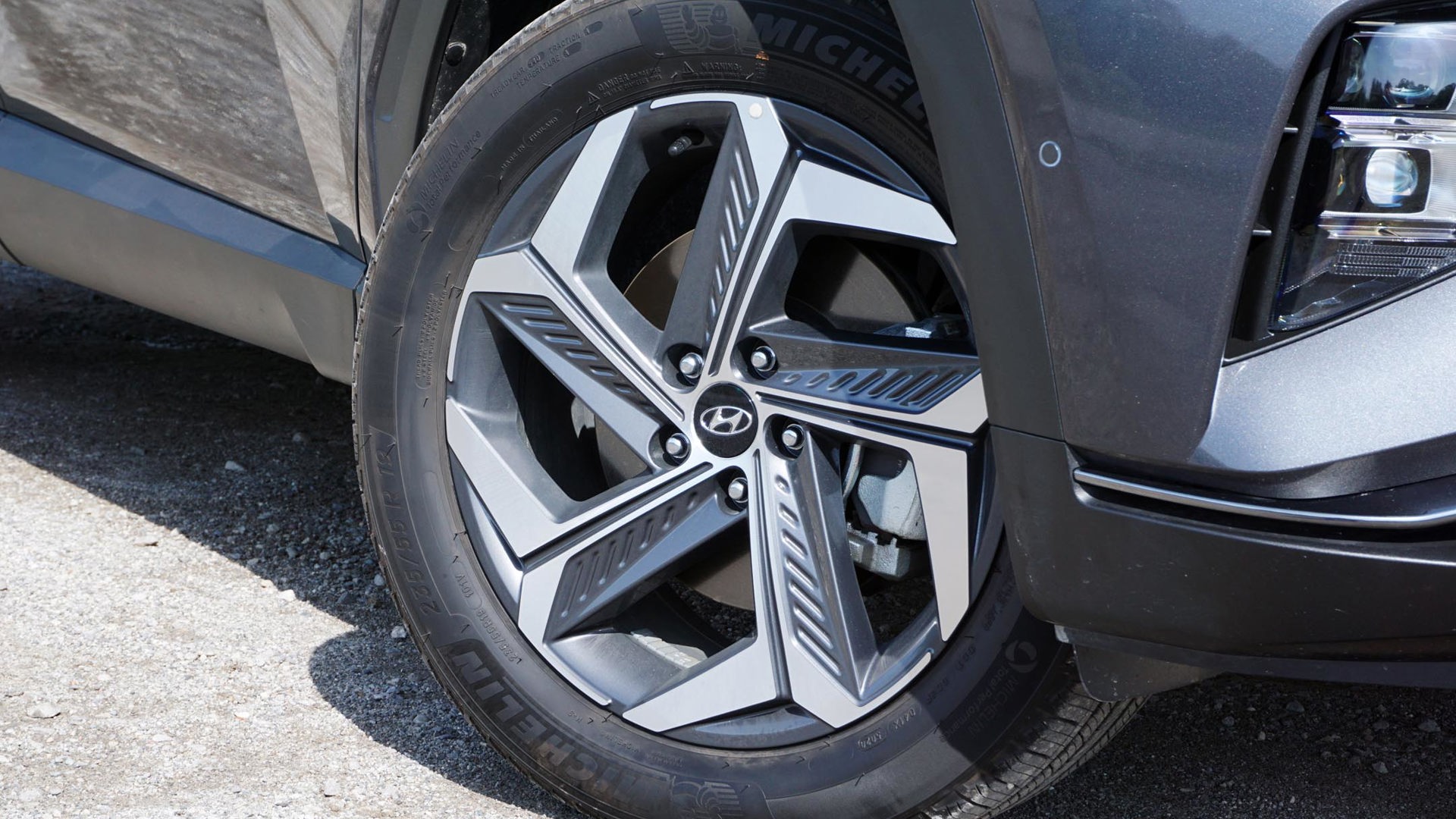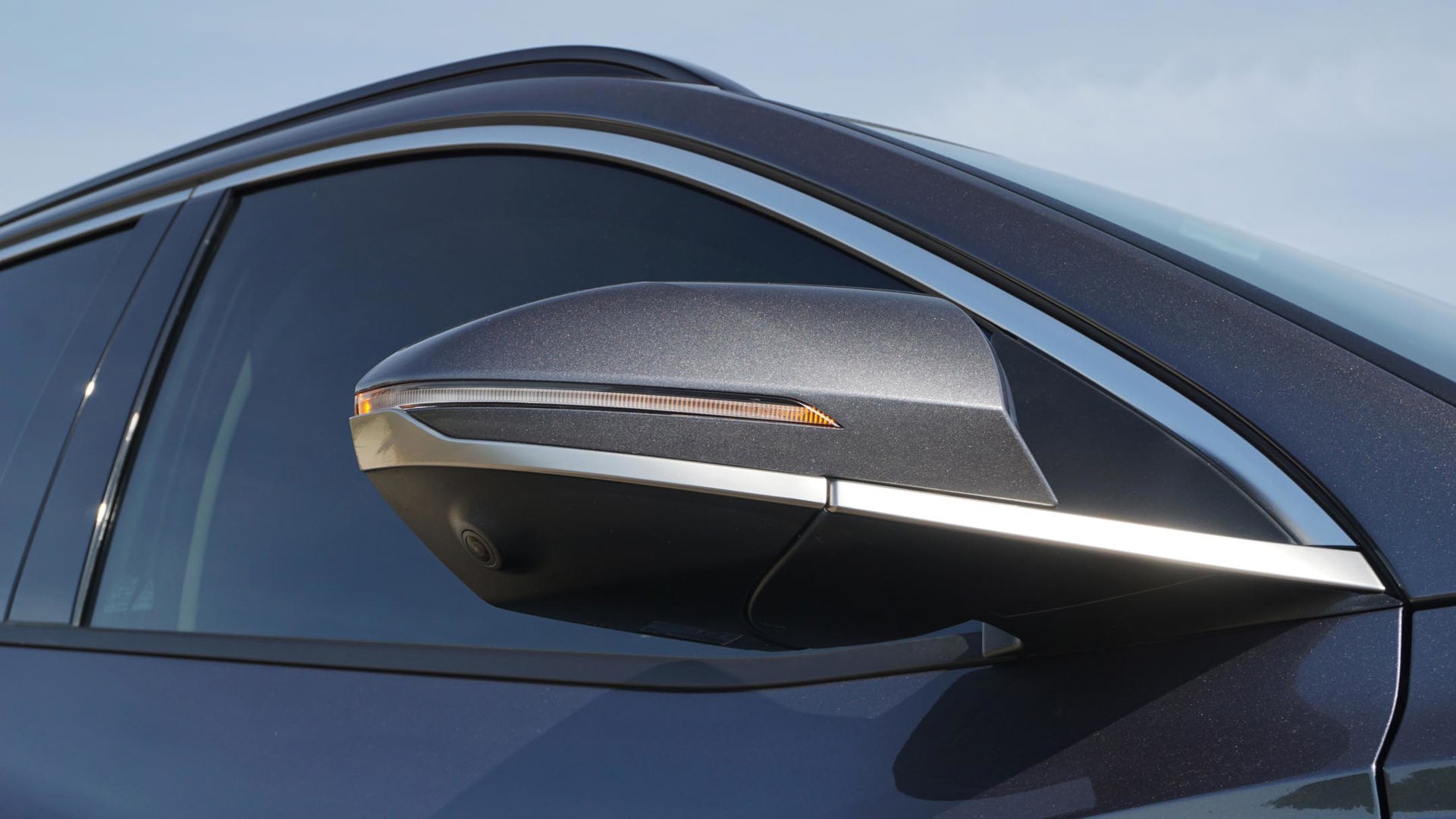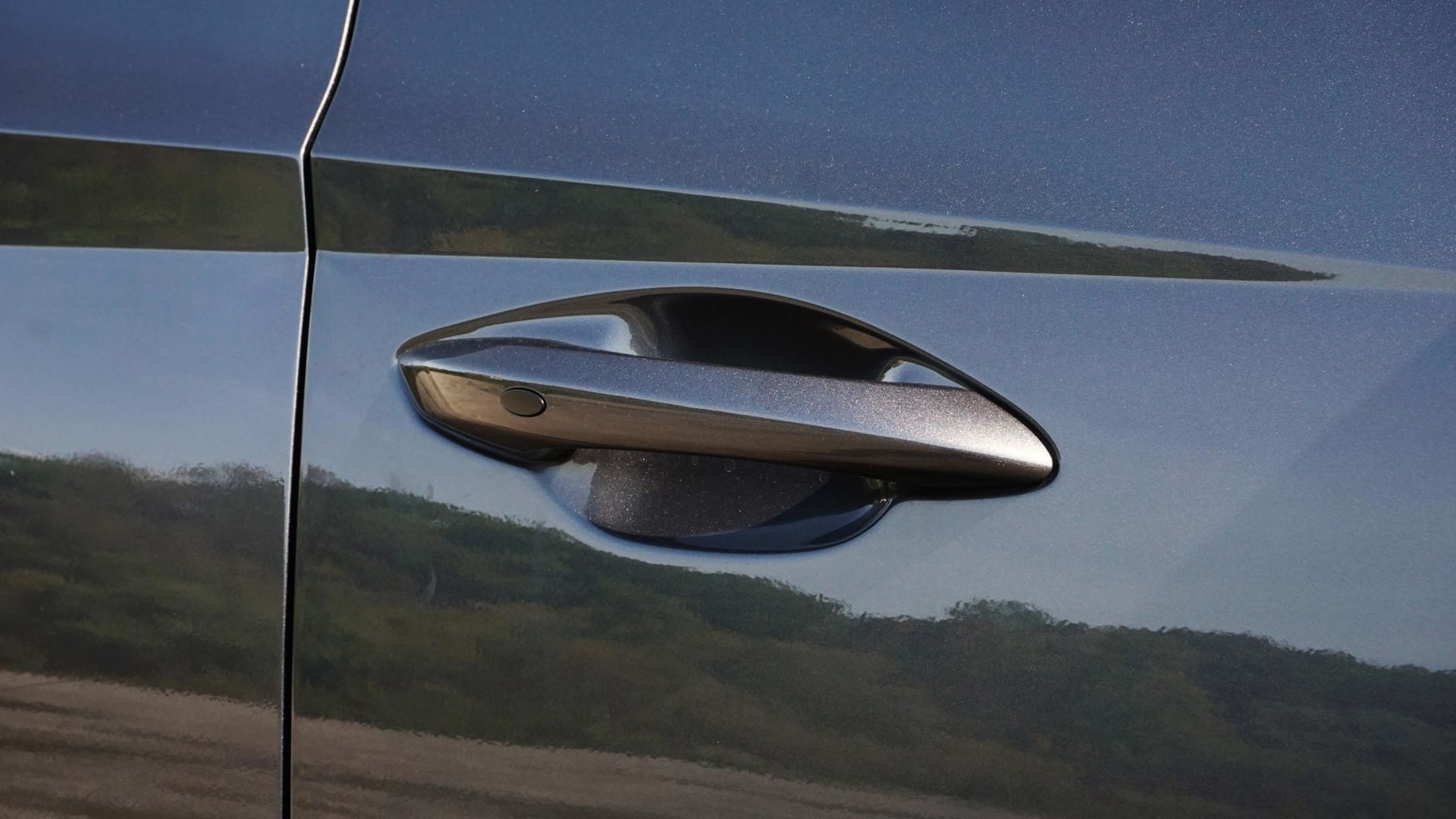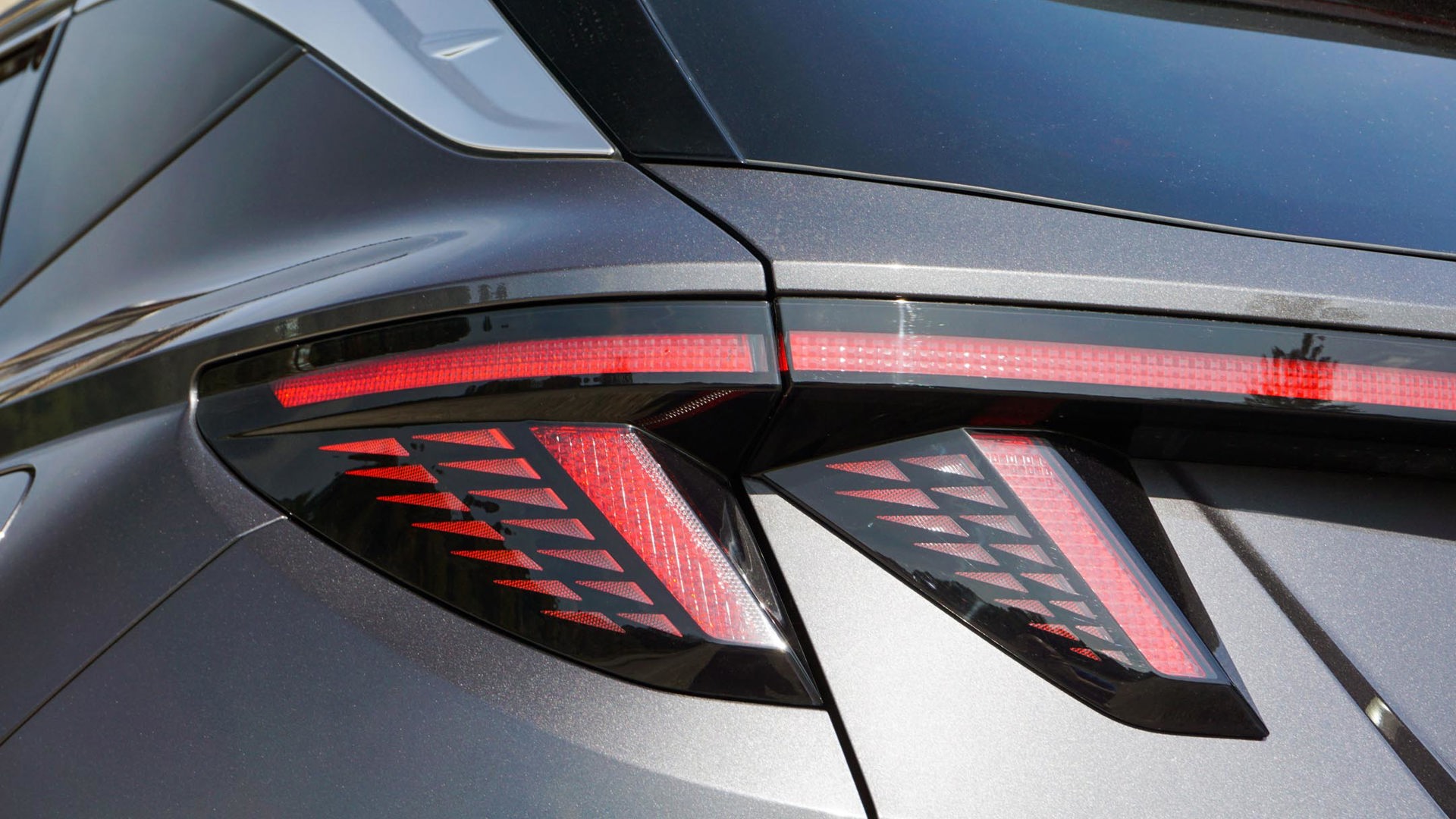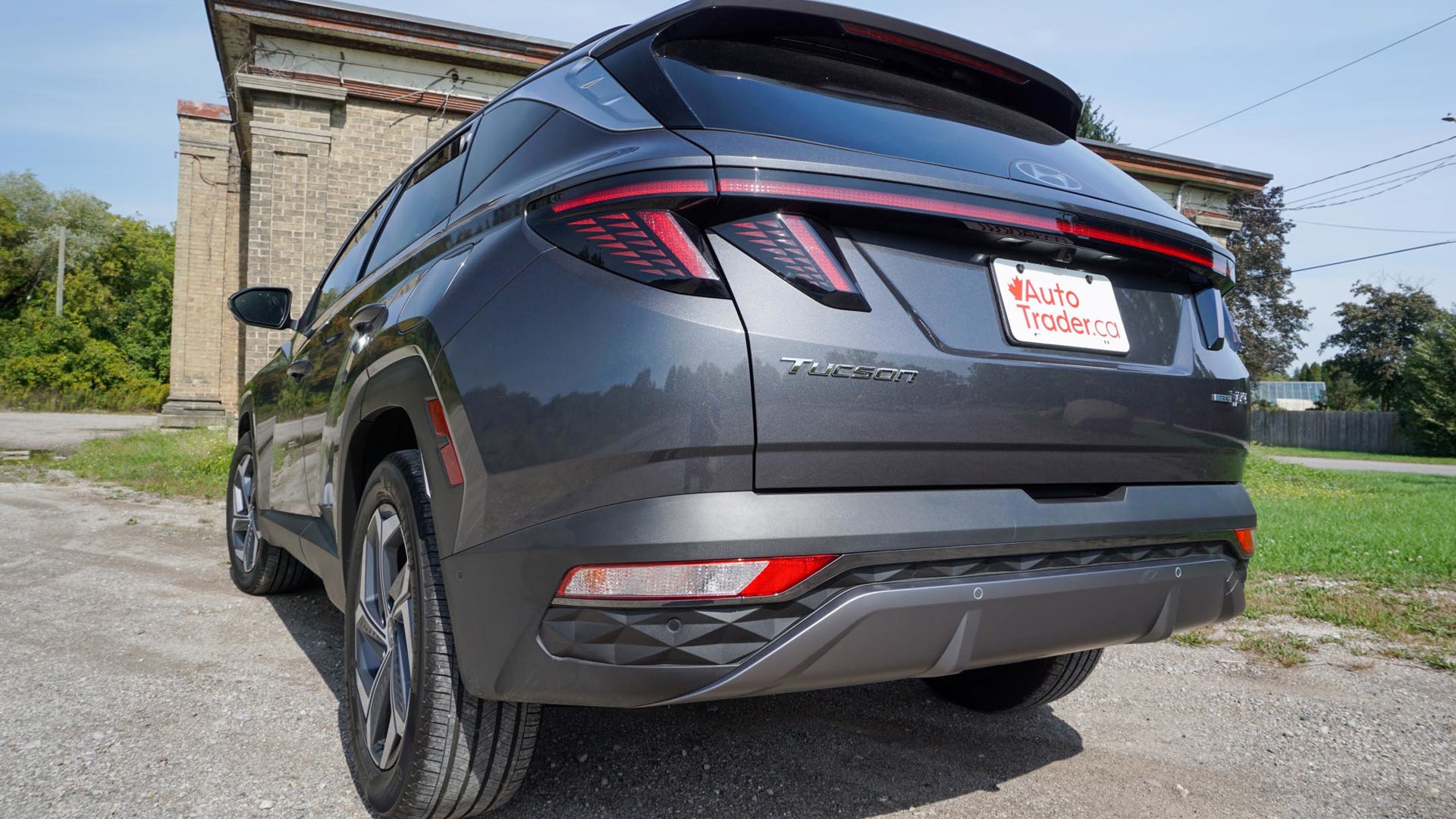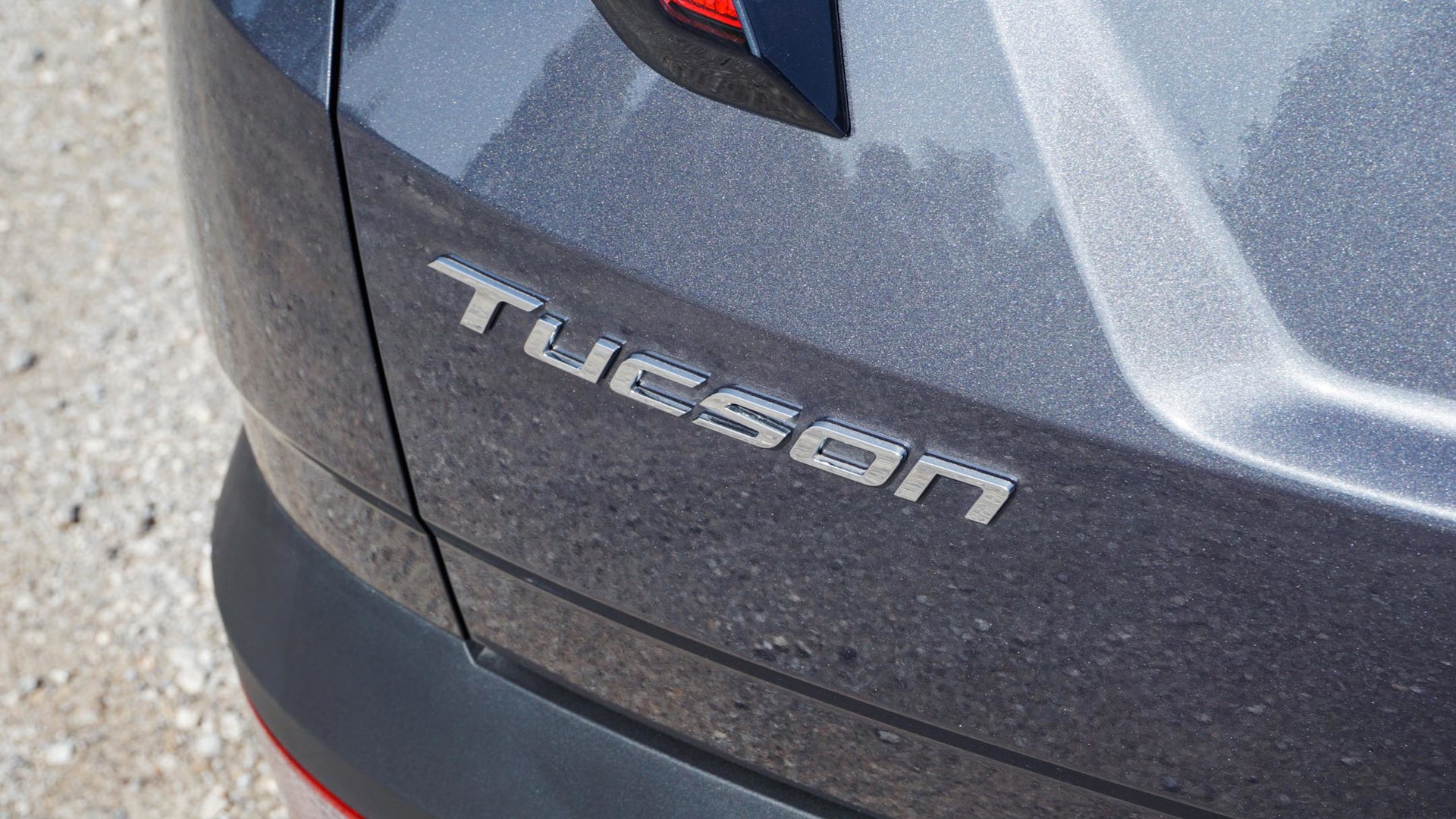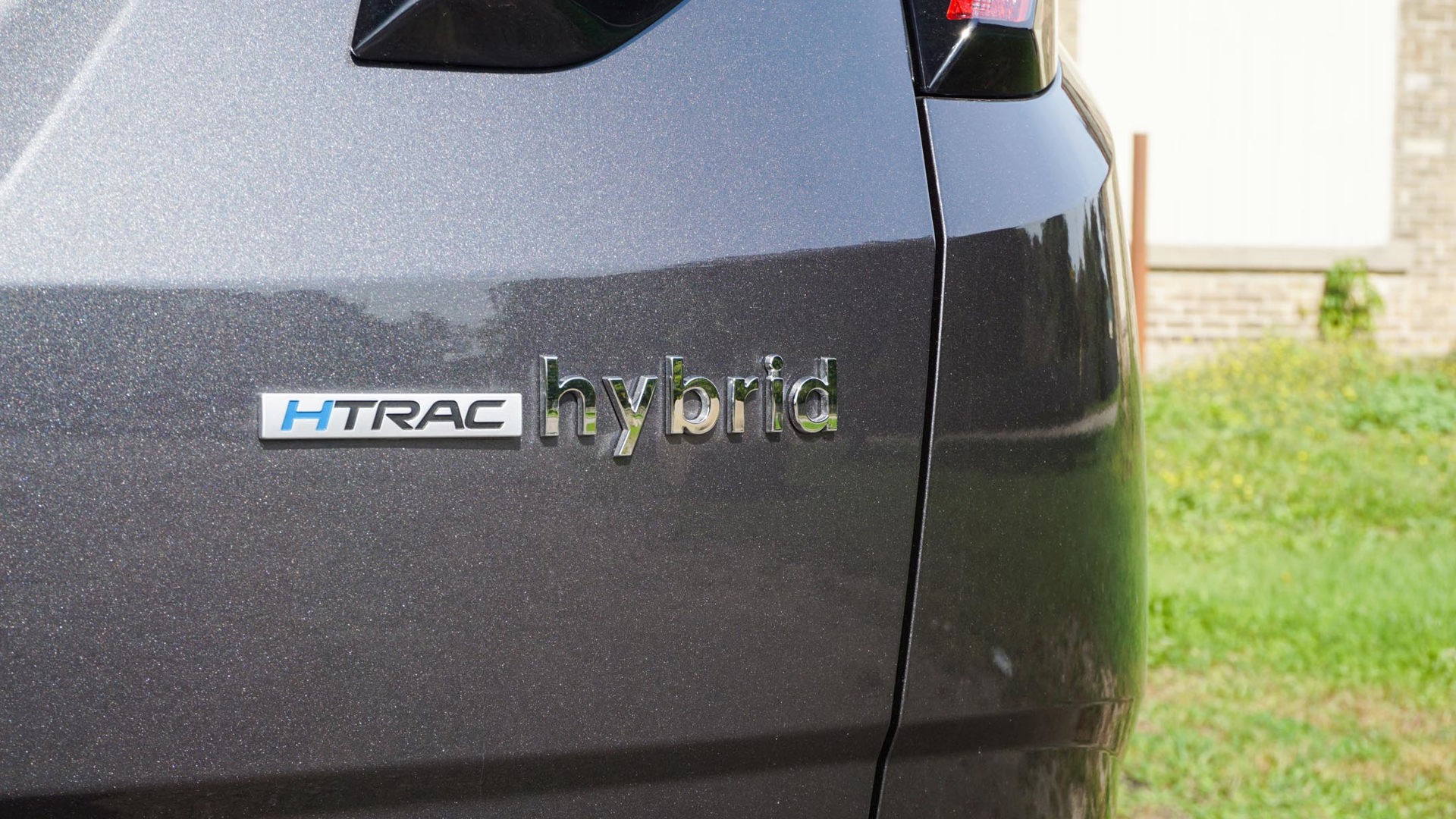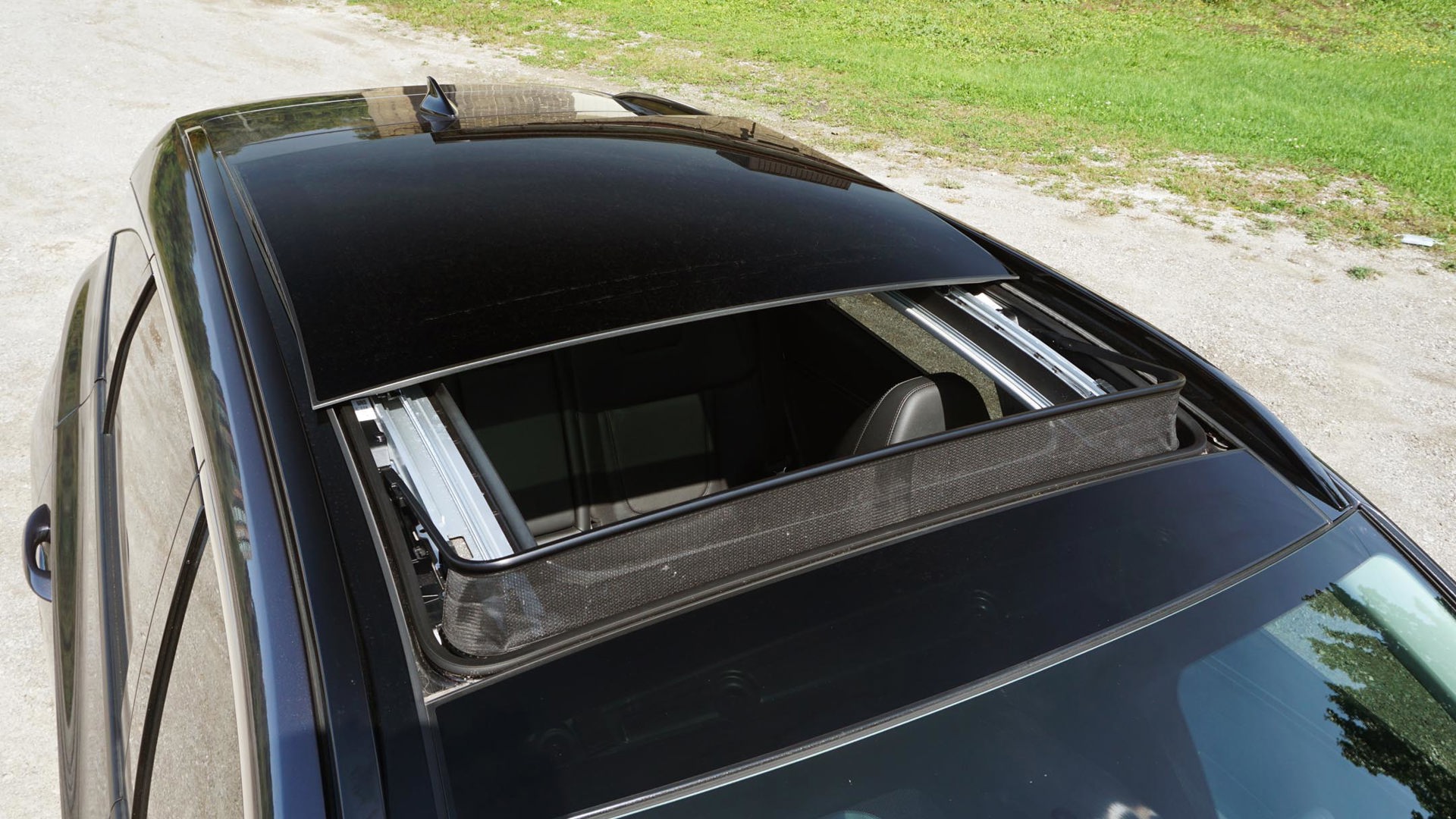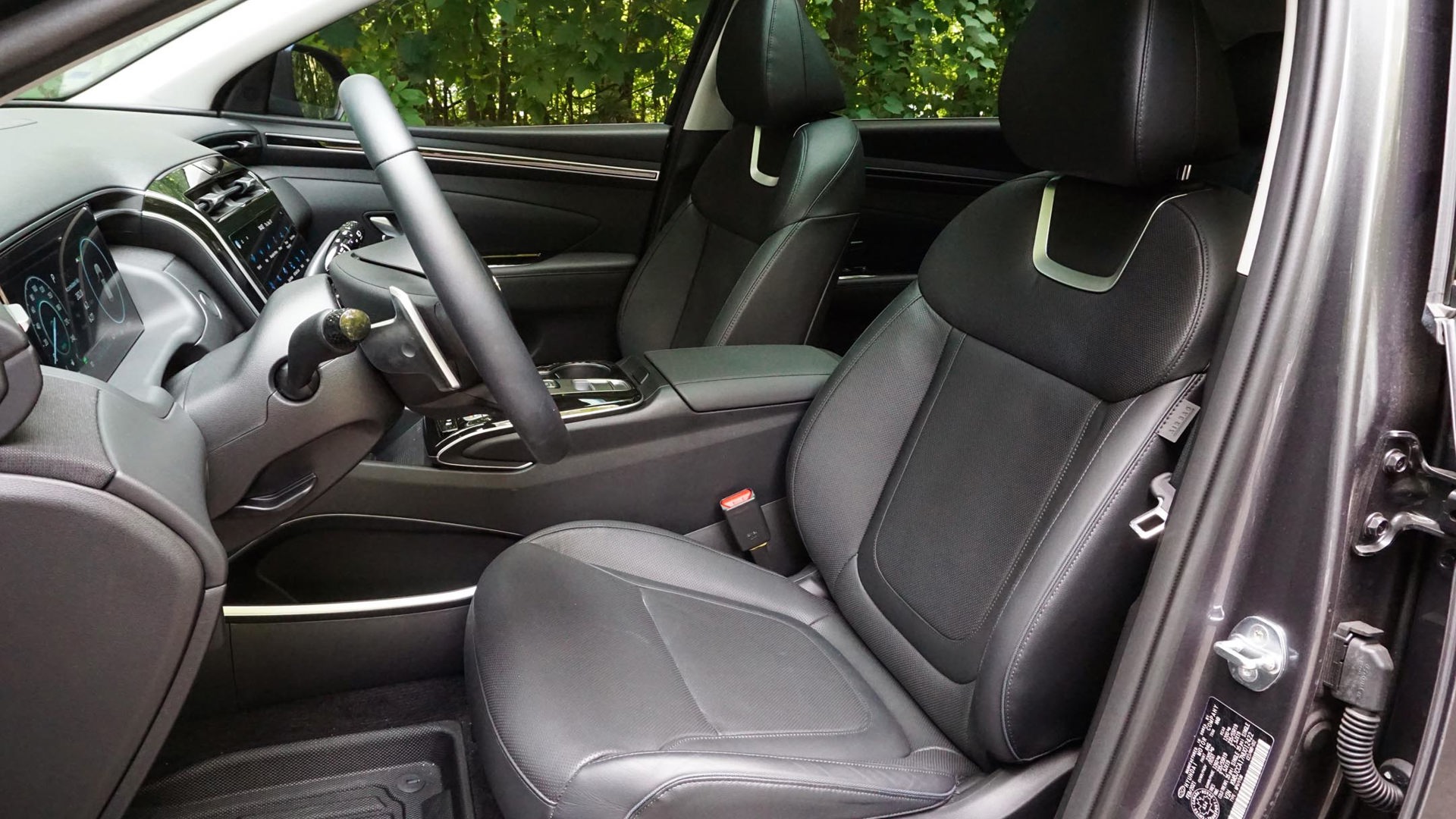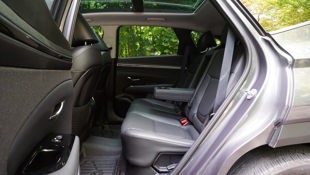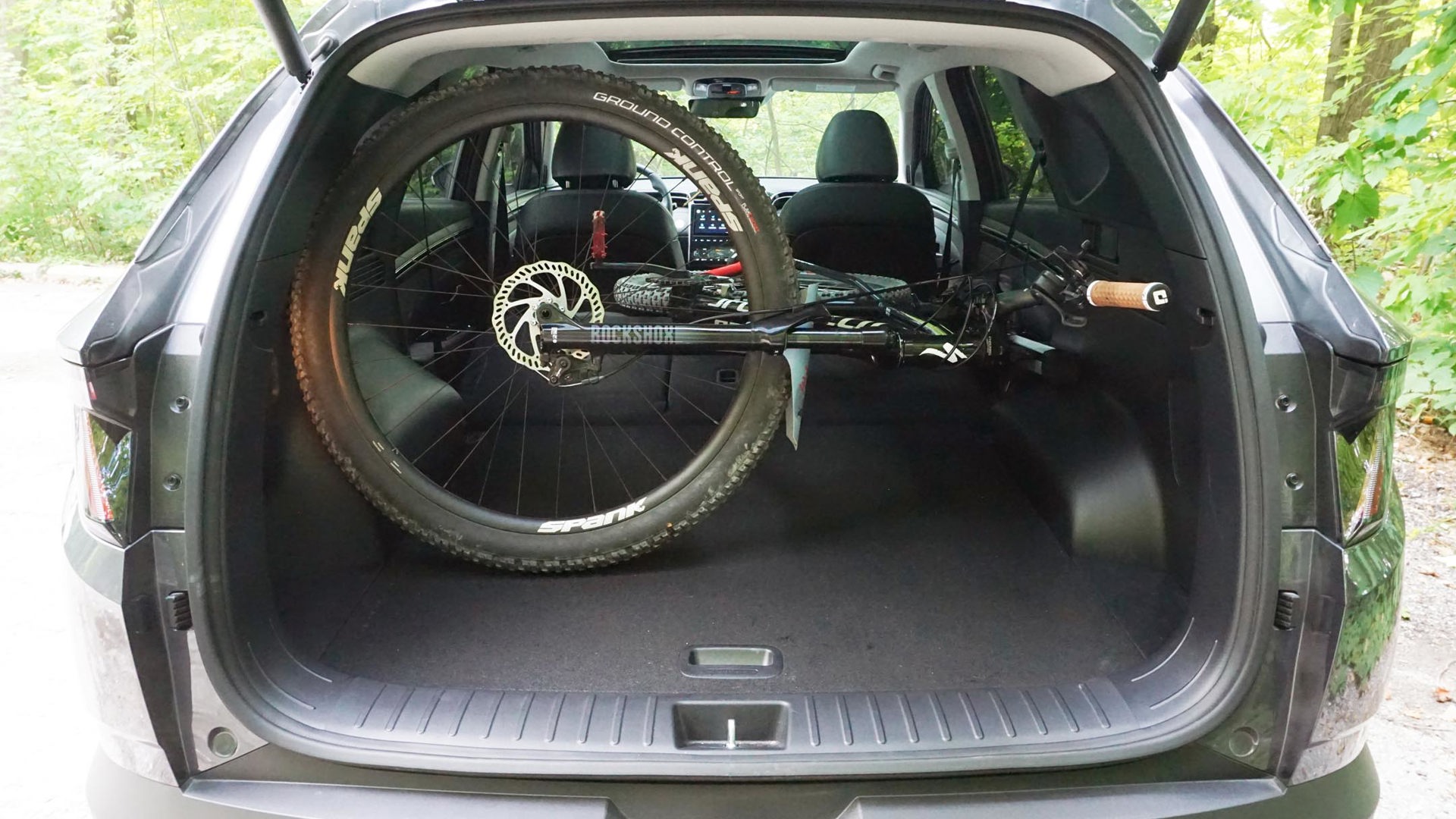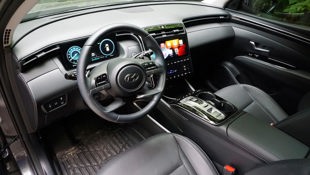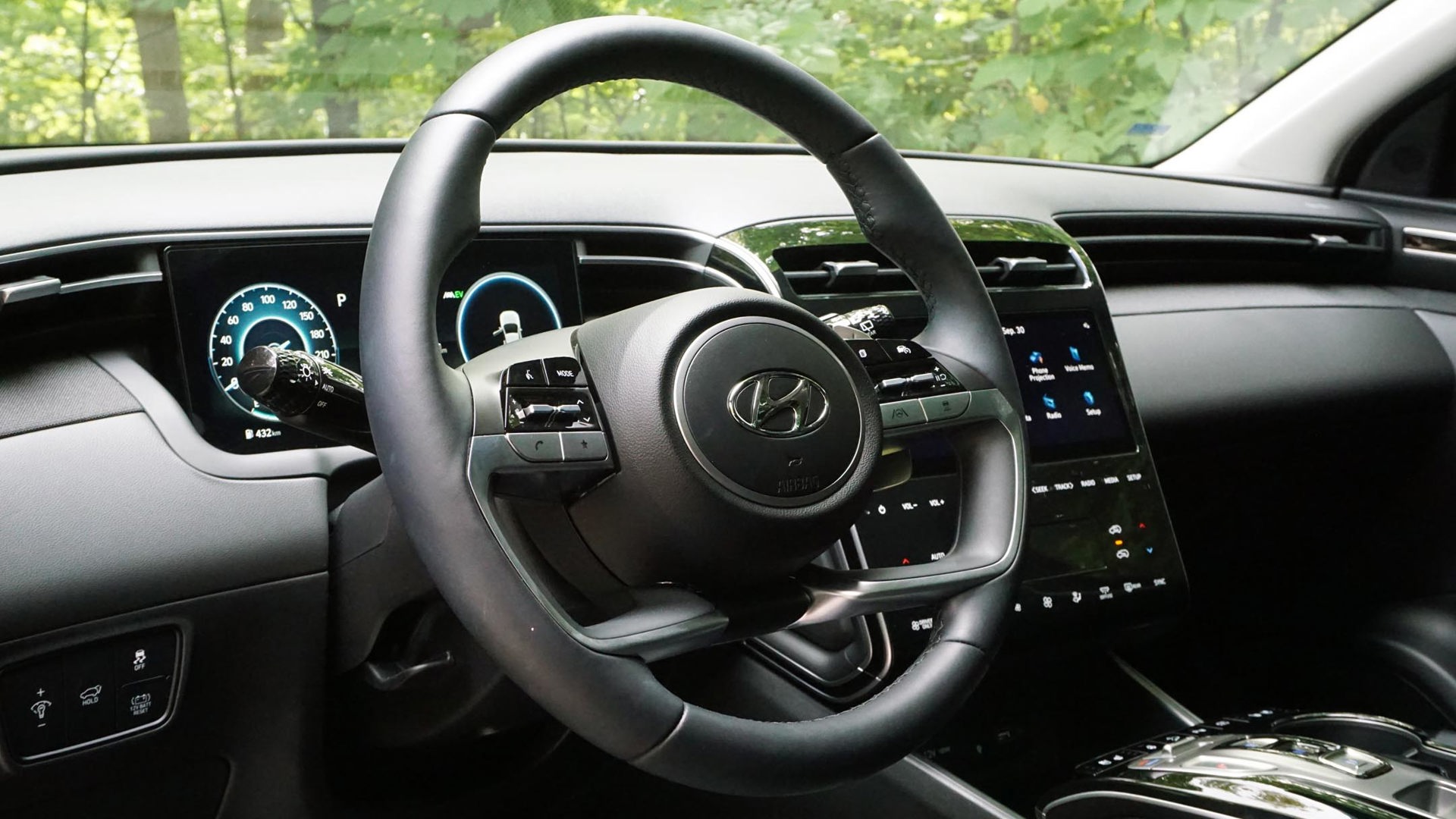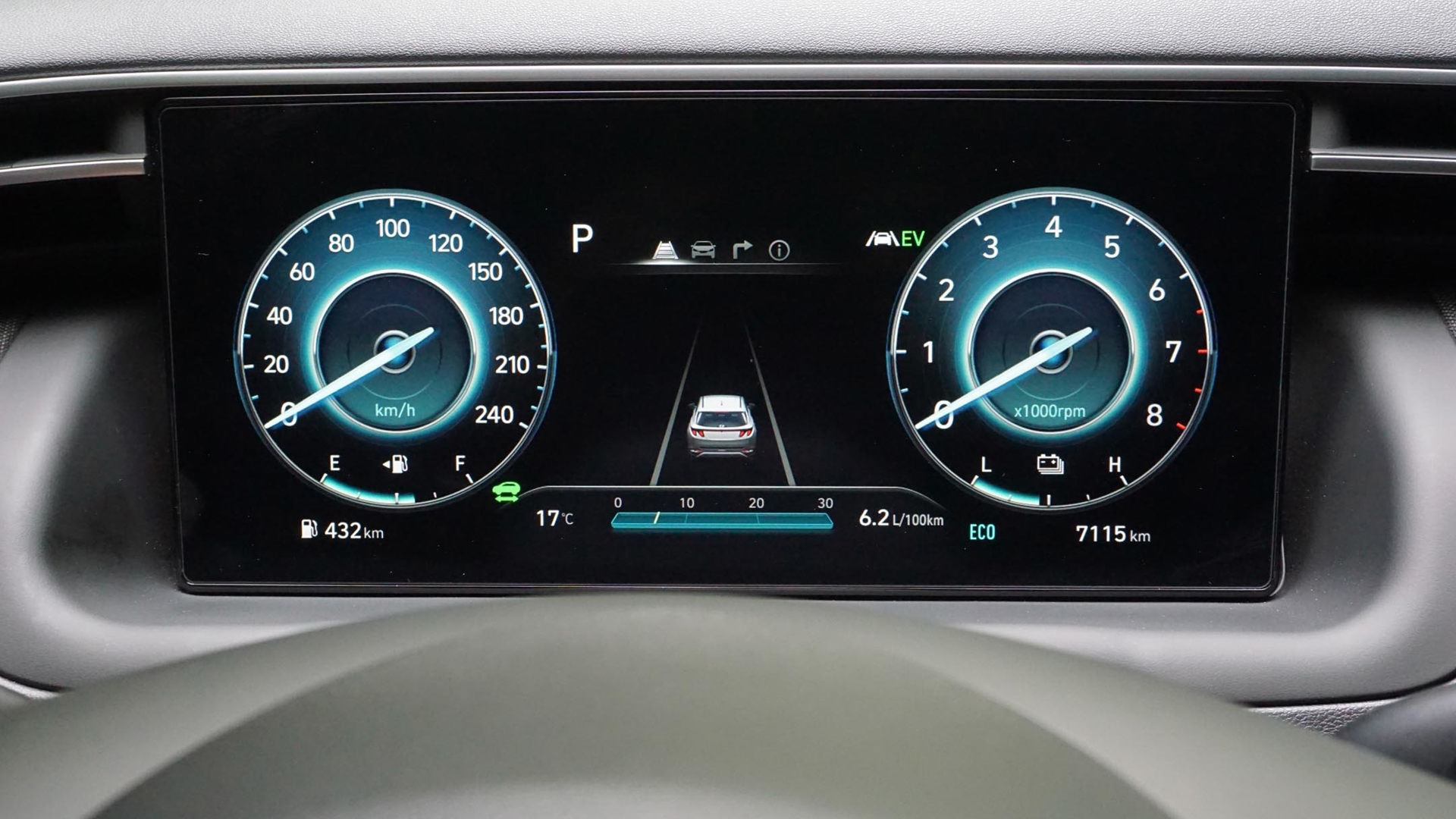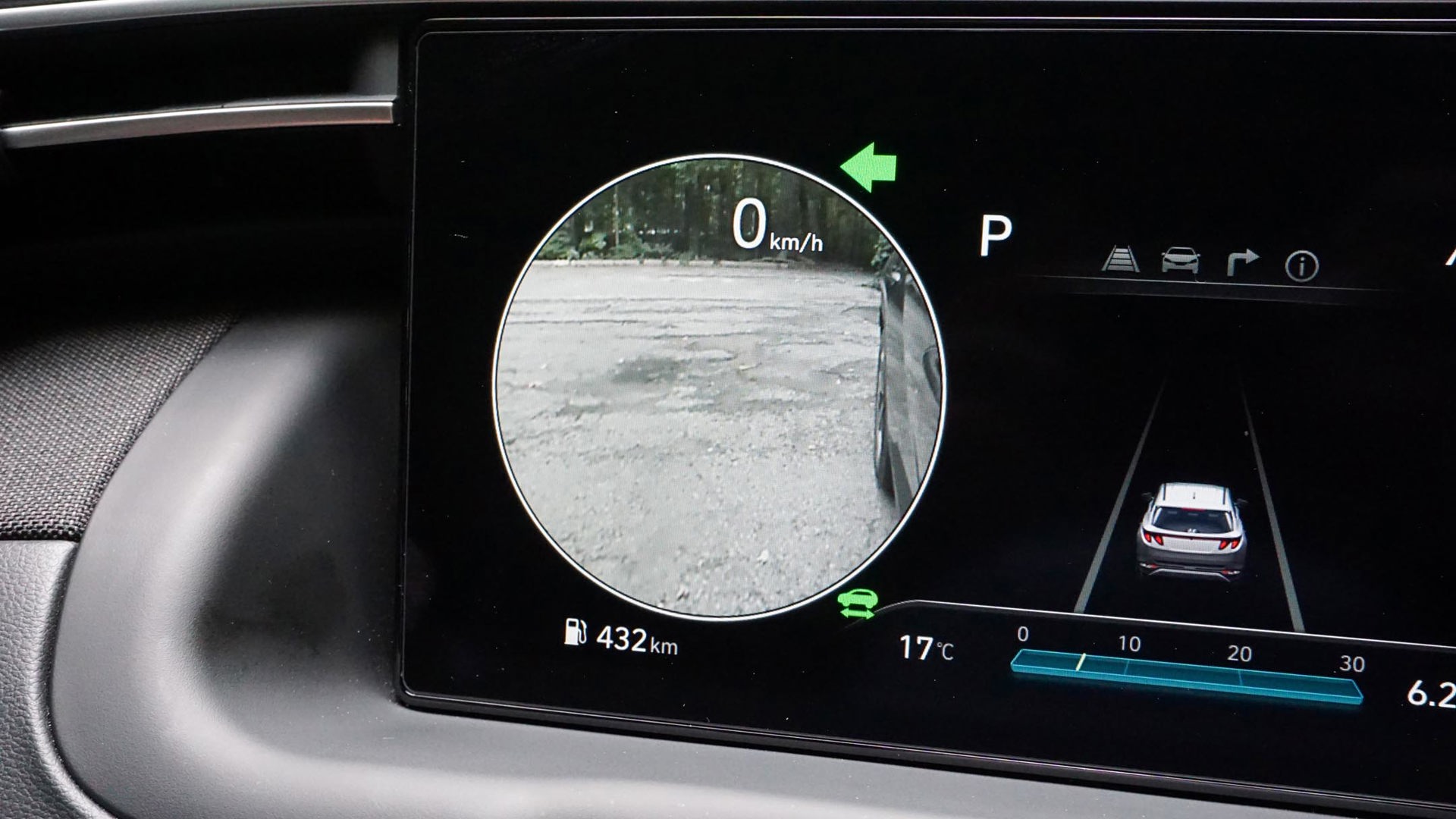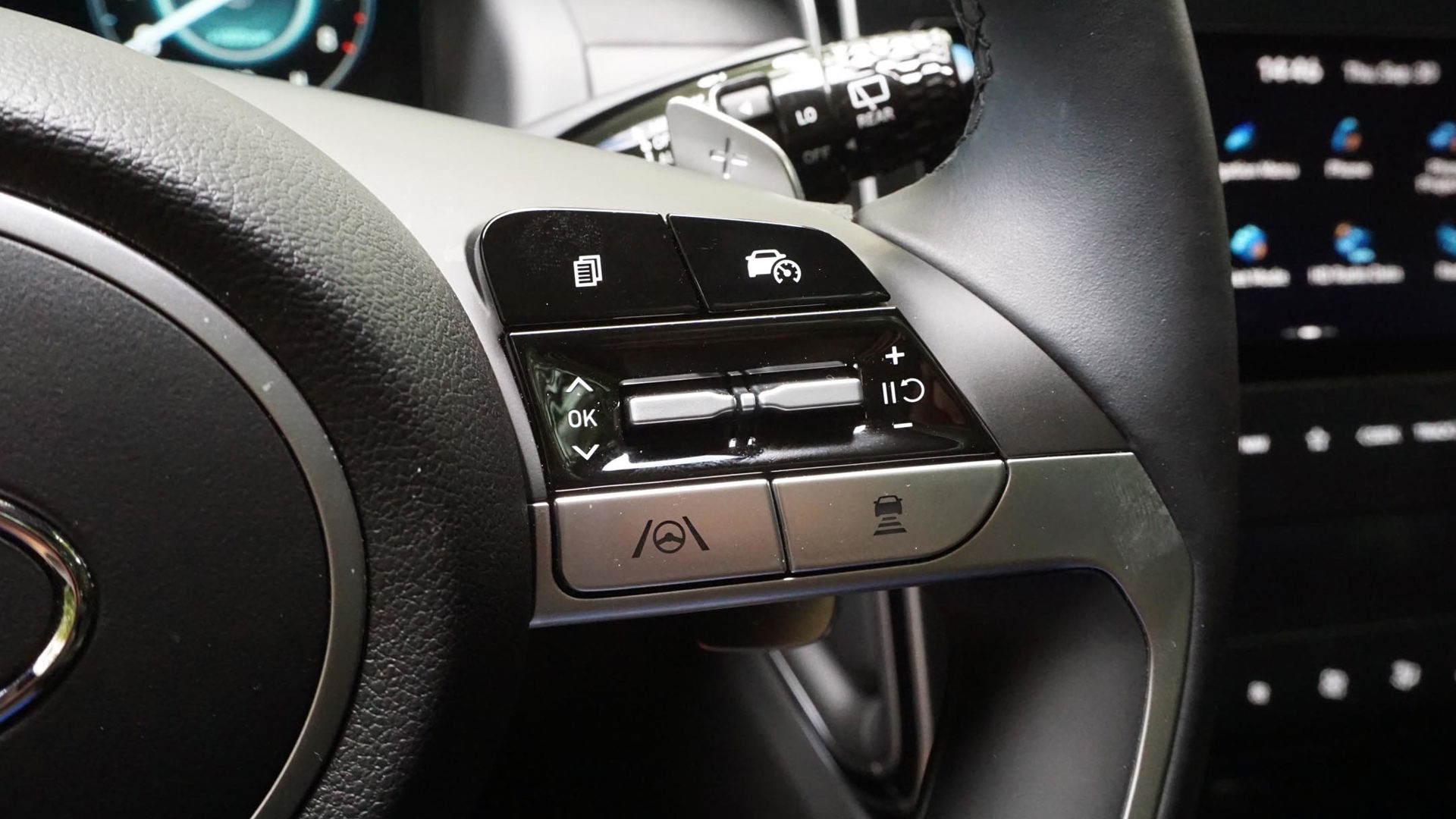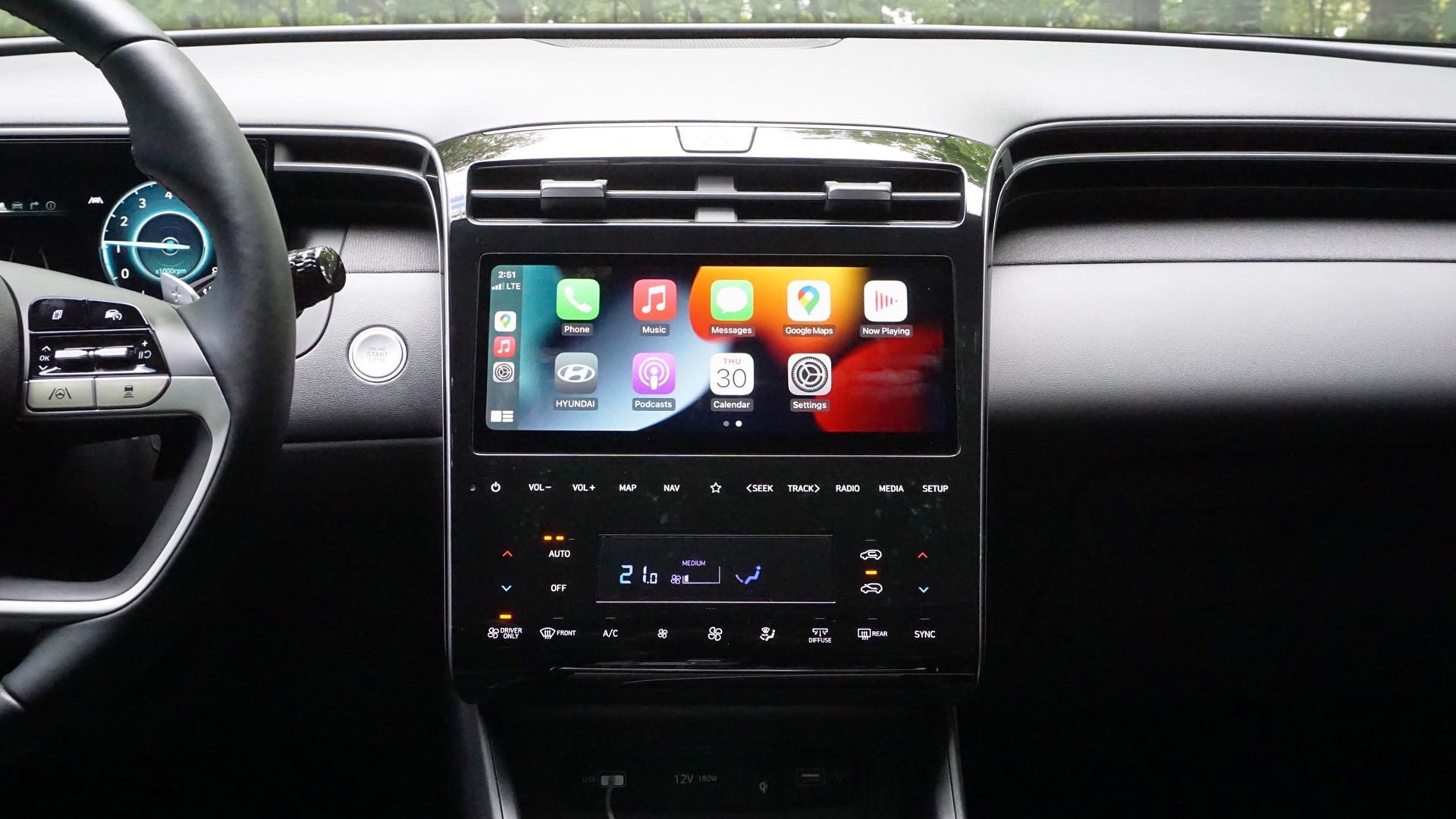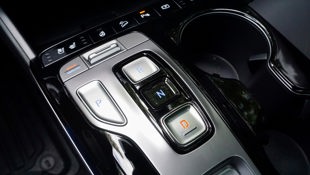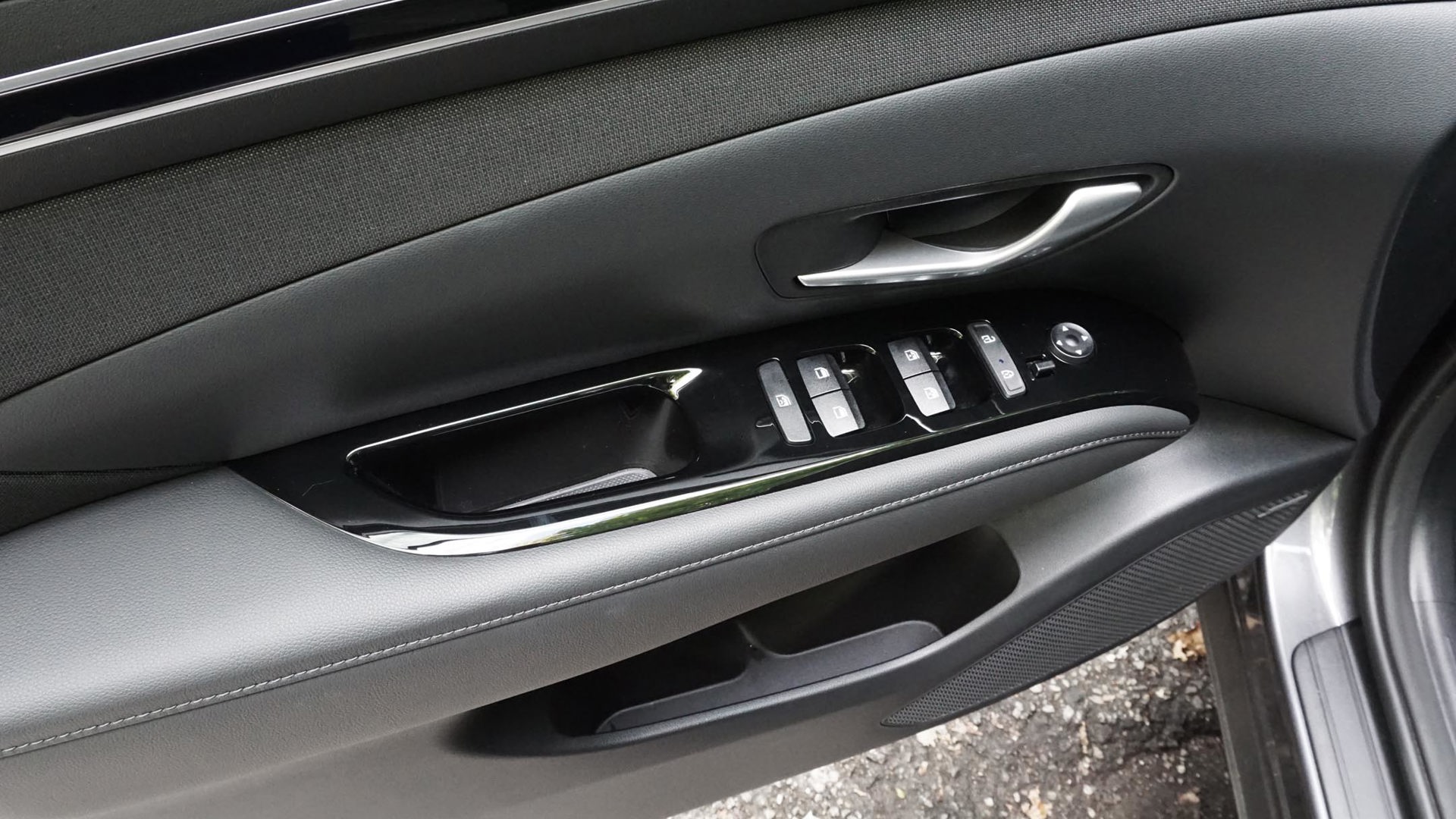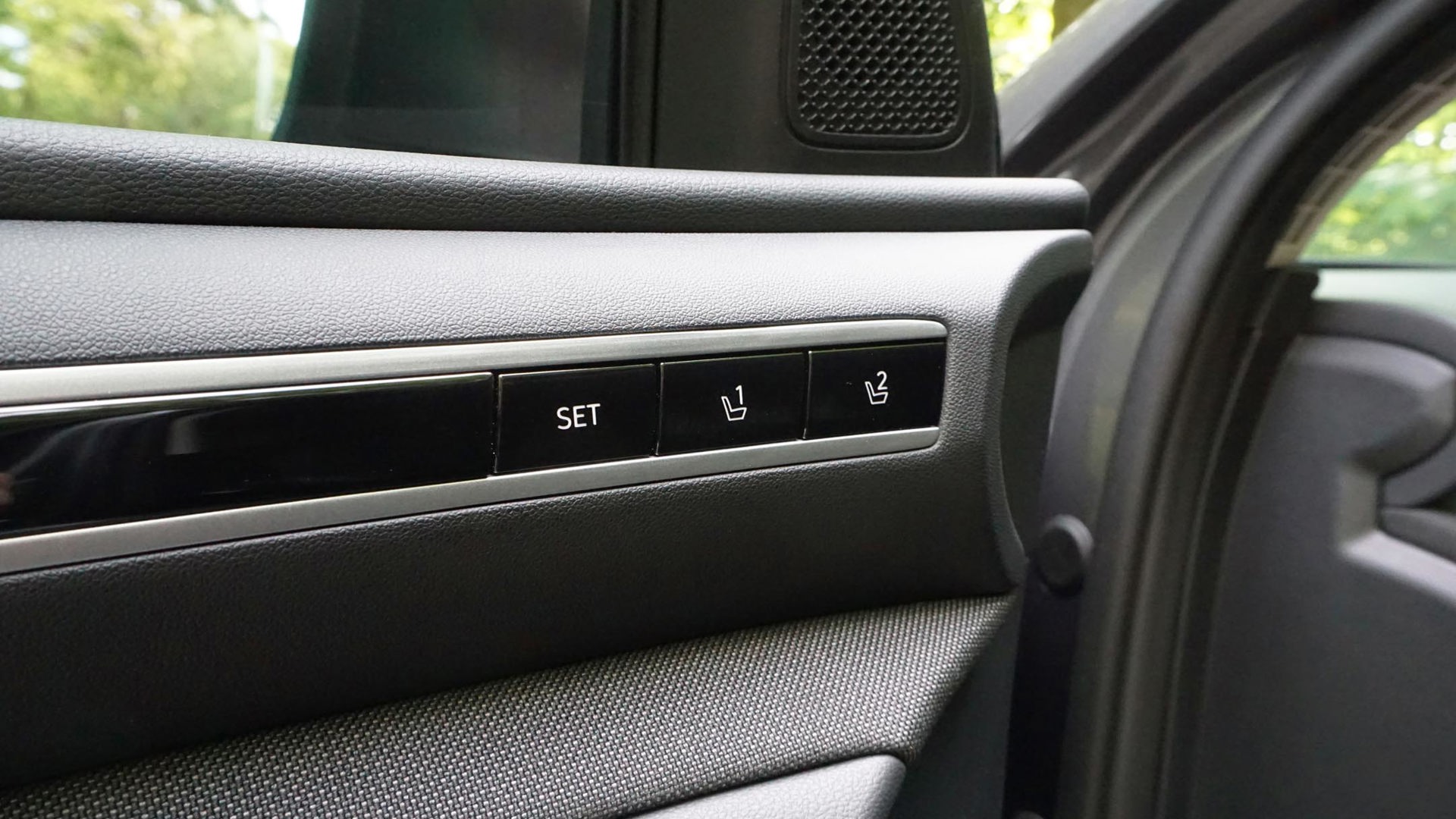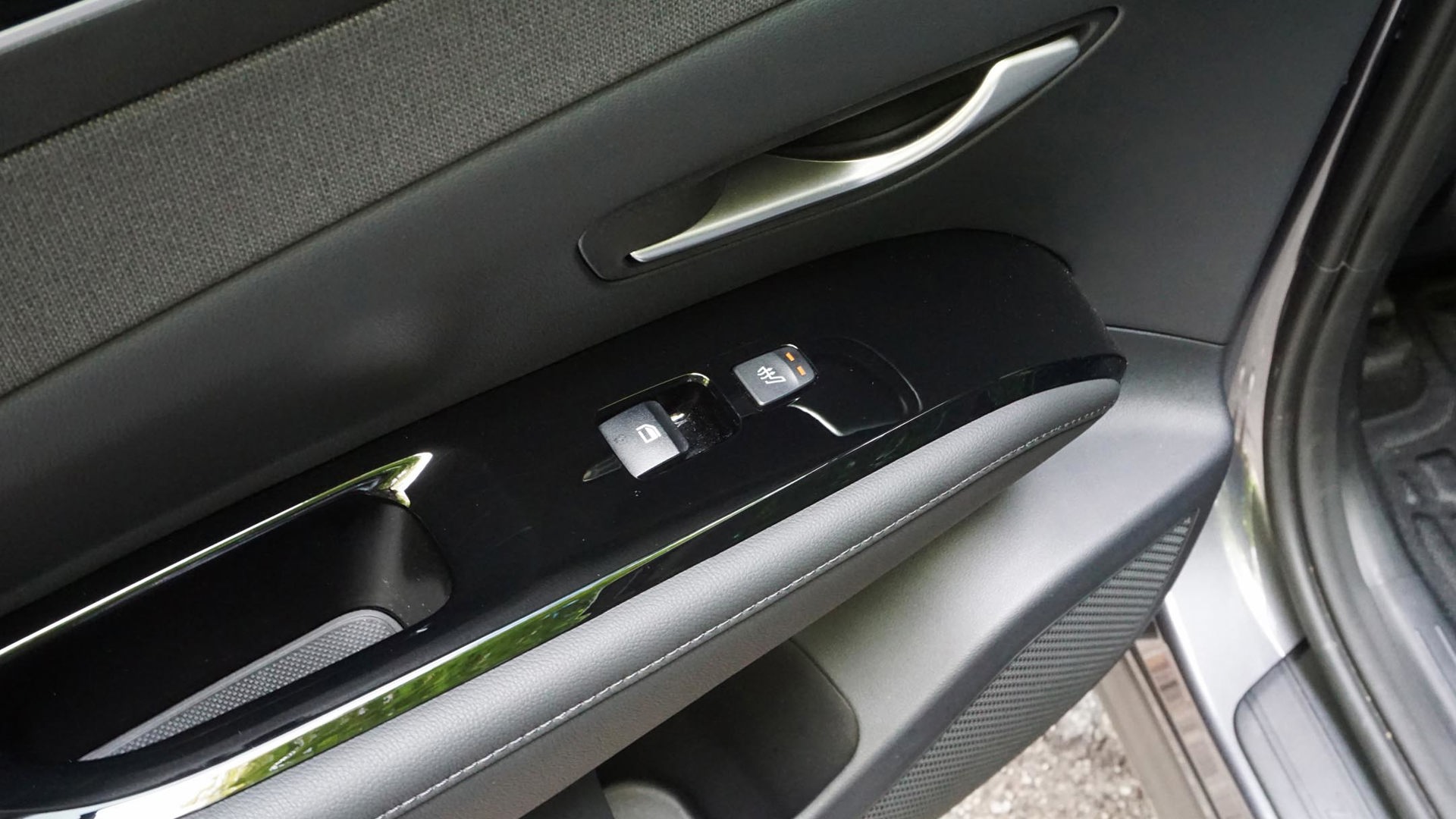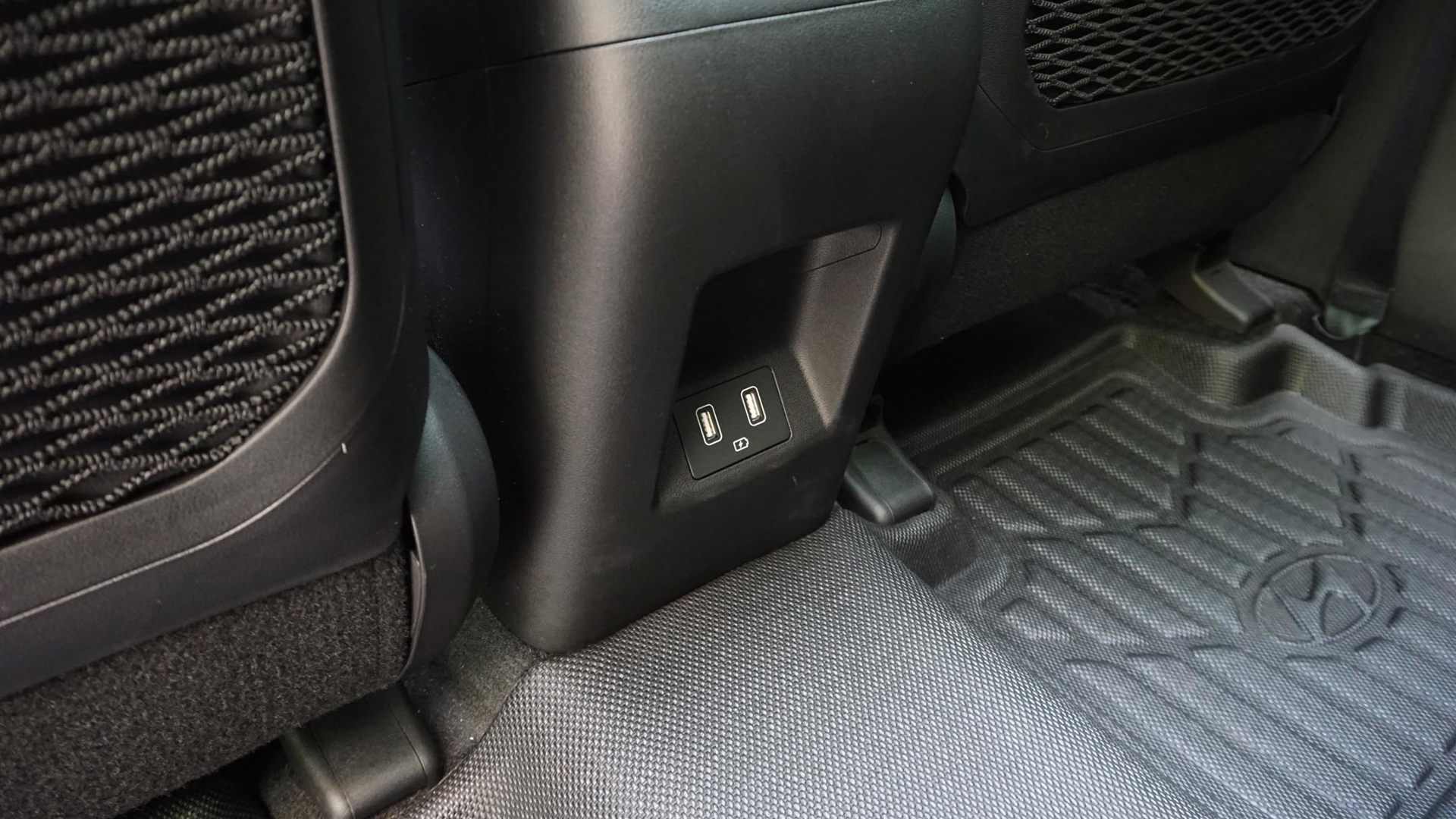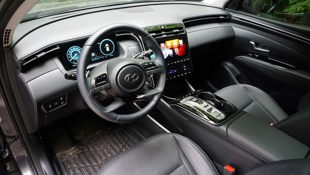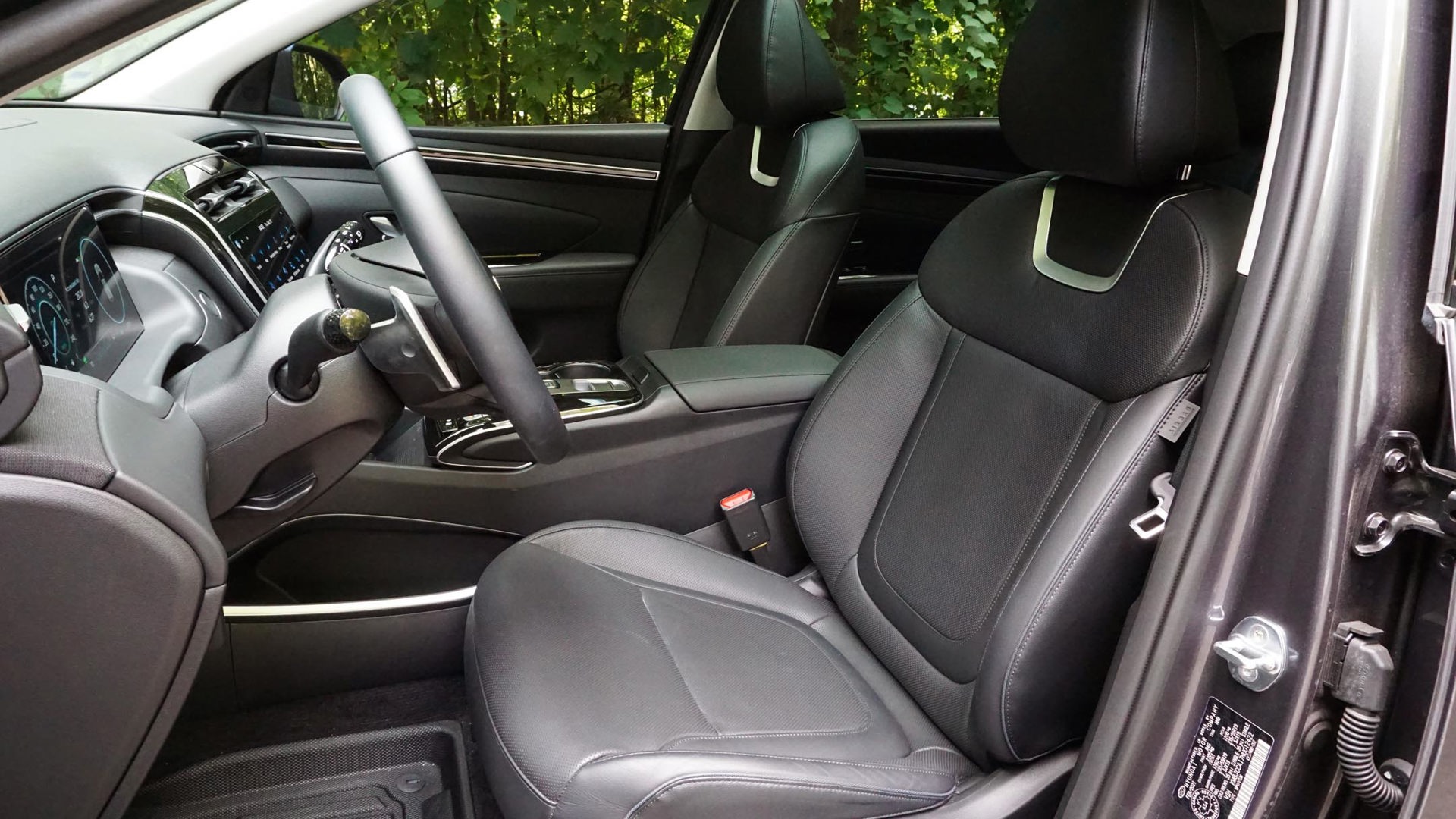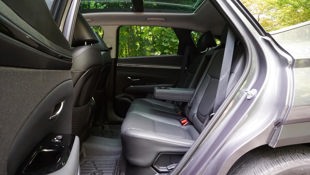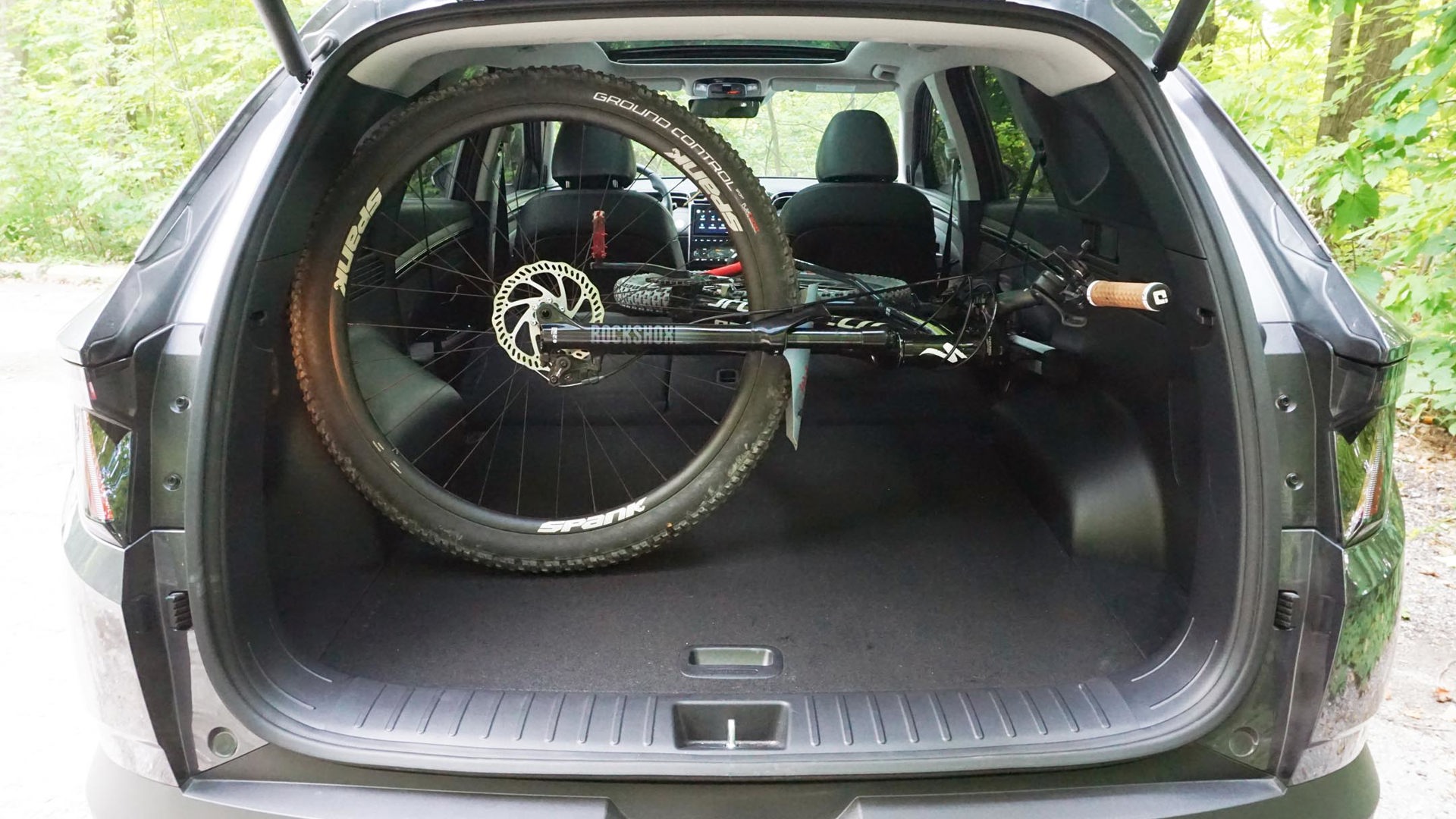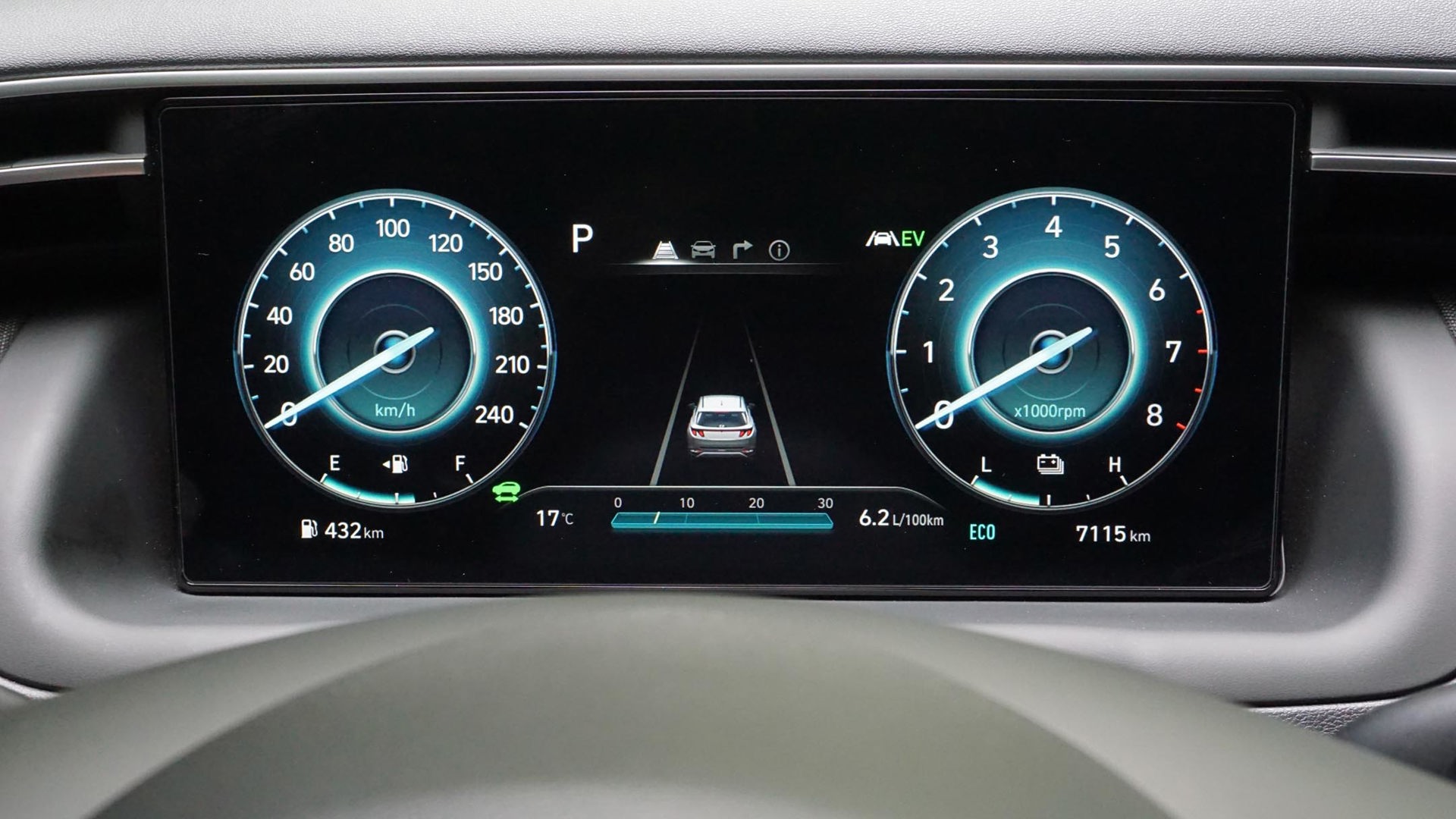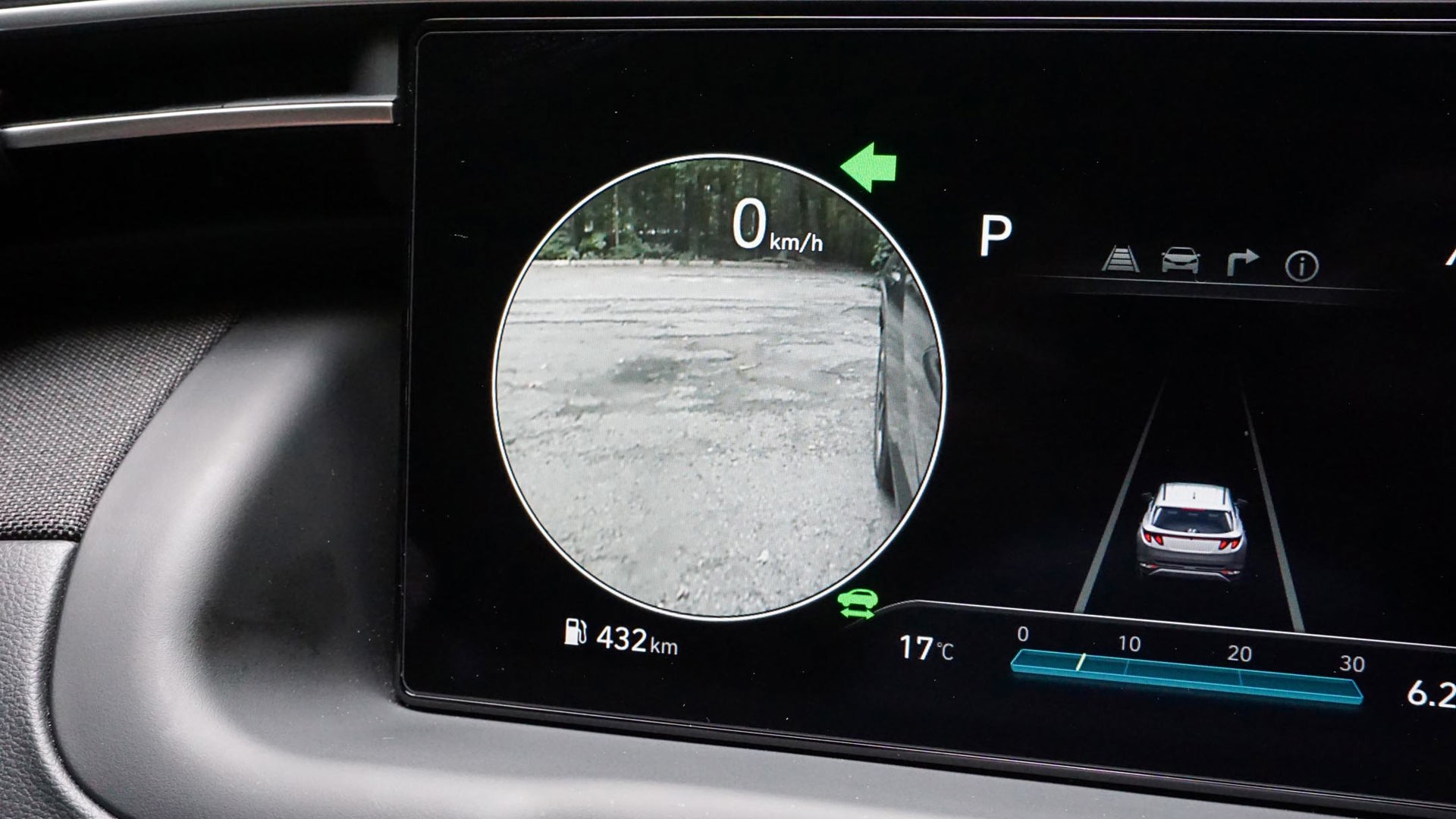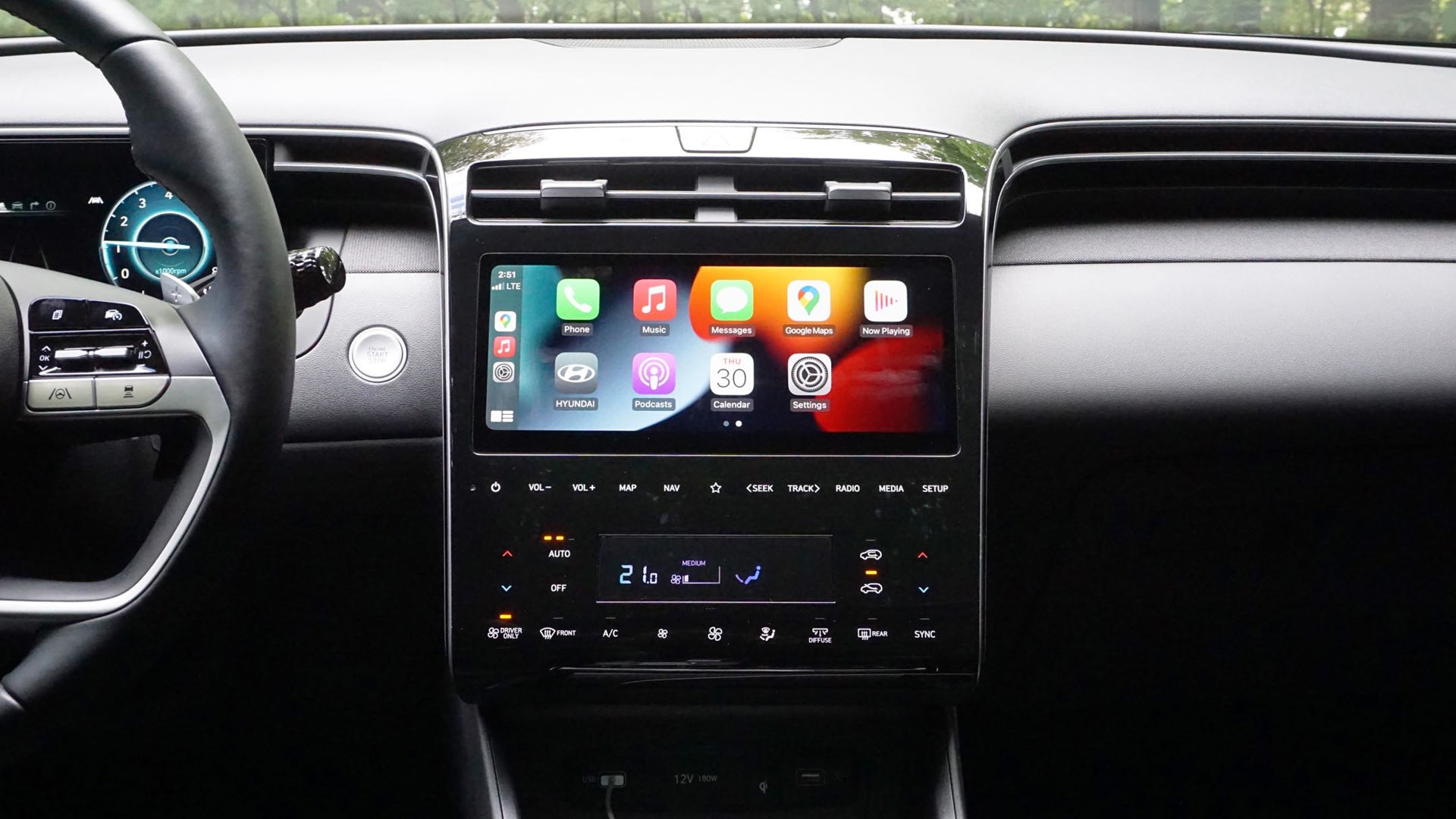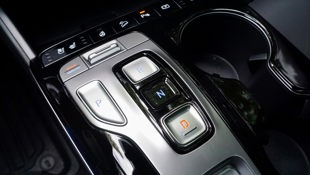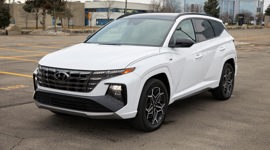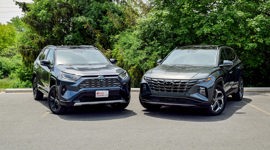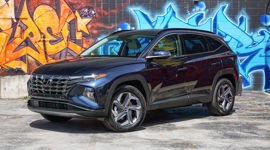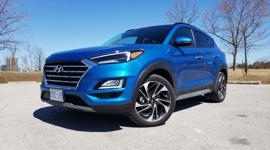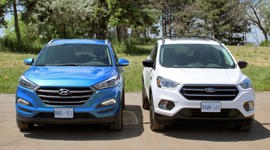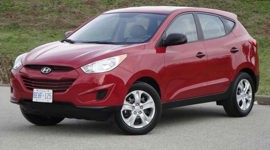 AutoTrader SCORE
AutoTrader SCORE
-
STYLING9/10
-
Safety9/10
-
PRACTICALITY10/10
-
USER-FRIENDLINESS6/10
-
FEATURES10/10
-
POWER10/10
-
COMFORT10/10
-
DRIVING FEEL10/10
-
FUEL ECONOMY9/10
-
VALUE9/10
There aren’t many compact crossovers that scream “look at me” as loudly as the 2022 Hyundai Tucson, with a redesign that’s about as bold as they get.
This new take on the Tucson also means the top two trims are available exclusively with hybrid power – a daring strategy for the brand to take with one of its most popular products, except for one crucial factor: it’s good. Like, really good. For those leery of going gas-electric, there’s no better vehicle with which to get indoctrinated than the 2022 Hyundai Tucson Ultimate Hybrid, with performance that feels decidedly unlike a hybrid in the first place, and a features list that could make a luxury brand blush.
Now add in generous space, a competitive price tag, and ride quality that rivals high-priced premium offerings, and the Tucson Ultimate has vaulted itself to the top of this highly competitive segment. That it’s a fuel-efficient hybrid only enhances its appeal.
Features: 10/10
This being the top trim in the Tucson lineup, Hyundai has thrown just about everything imaginable at this fourth-gen version. Well, everything except a head-up display – the only omission worthy of note. (It could probably use some USB-C ports, too, but that’s just nitpicking.)
Otherwise, this loaded Tucson takes everything from the Luxury version that’s $2,700 cheaper – heated and ventilated front seats, heated rear seats, leather upholstery, an eight-speaker stereo, and a 10.25-inch all-digital instrument cluster – and adds stuff like a 10.25-inch touchscreen infotainment system with navigation, the brand’s so-called highway driving assist that provides some automated steering input, and blind-spot camera views in the instrument cluster.
Other add-ons include a surround-view monitor, front and rear proximity sensors, a couple memory settings for the driver’s seat, an eight-way power-adjustable passenger seat, and 64 colours of interior ambient lighting. It also gets Hyundai’s gimmicky remote parking system that allows the vehicle to be controlled via the key fob to pull straight forward or back – handy-ish for accessing tight spots.
All that’s in addition to standard stuff across the lineup like a heated steering wheel, proximity buttons on the front doors for key-free access, push-button ignition, Apple CarPlay and Android Auto, satellite radio, and adaptive cruise control that works in stop-and-go traffic.
Value: 9/10
It’s a well-featured package for the price, with this loaded up little hybrid ringing in at $43,424 before tax but including a non-negotiable freight charge of $1,825. While there aren’t many gas-electric options to choose from in this segment, the award-winning Toyota RAV4 Hybrid tops out at $45,210 before the government’s share is tacked on, while the especially efficient Ford Escape Hybrid comes in at $44,244 with similar equipment. The slightly larger Hyundai Santa Fe Hybrid, meanwhile, is $45,824 in its priciest trim, while the Toyota Venza tops them all at $49,550 in Limited guise.
Power: 10/10
In addition to all those good features, the asking price of this Hyundai includes a hybrid powertrain that’s unlike anything else out there – well, anything aside from the Santa Fe, which uses the exact same mechanical and electrical components. Rather than a naturally aspirated engine and automatic continuously variable transmission (CVT), a combo that often feels underpowered in the name of efficiency, the Tucson uses a tiny turbocharged motor and a six-speed automatic transmission instead.
It’s the same 1.6L four-cylinder found under the hood of a fun little car like the Kia Forte5 GT, here making 180 hp and 195 lb-ft or torque. Since torque is what leads to forward momentum in the first place, and all of it kicks in at just 1,500 rpm, the motor feels refreshingly responsive (especially since it’s piggybacking onto the instant torque of an electric motor), while the transmission that connects it to the all-wheel drive system operates like that of a conventional crossover.
Fuel Economy: 9/10
Of course, there’s more to it than those mechanical parts, and the 44-kW electric motor that’s paired with them works in unison with a 1.49-kWh lithium-ion battery pack under the back seat to deliver official efficiency ratings of 6.3 L/100 km in the city, 6.6 on the highway, and 6.4 combined. Those numbers are slightly worse than rivals from Toyota and Ford manage to muster, though a full week of testing saw the Tucson Hybrid outperform them (albeit by slim margins).
An initial evaluation drive spanning some 250 km spread over some city driving but mostly on major and secondary highways – where hybrids typically do their worst work – returned a combined average of 6.2 L/100 km, while the full week finished at 6.3 L/100 km over the course of some 600 km, the vast majority of them racked up on the highway.
Driving Feel: 10/10
Best of all, that efficiency was achieved without any effort whatsoever. Whereas typical hybrids, whether crossovers like this or otherwise, require something of a conscious effort to keep their gas engines from doing the heavy lifting – and often sound strained when those motors kick in – the Tucson operates with little fuss. In fact, it drives like any other crossover this size out there, with little indication of which part of the powertrain is working harder than the other.
A big reason why is the six-speed transmission, which isn’t the typical choice for hybrids of any kind. Instead of the stretch and strain of a CVT, the gears make it feel like a conventional crossover as the Tucson accelerates smoothly. Add in the low-end kick of the turbo motor, and performance is on par with anything else in the segment, with the added bonus of compact-car-like efficiency.
While there’s a touch of body roll, which is to be expected when driving a crossover in the first place, steering response is precise. It’s maybe not quite as enjoyable to drive as the Mazda CX-5, but it’s a close second, while the brakes bring it to a halt with confidence as they also put energy into the battery for later use.
Safety: 9/10
On the subject of confidence, the Tucson Hybrid’s top trim has all the right advanced safety stuff to inspire plenty of it: forward collision warning with pedestrian and cyclist detection, as well as the ability to warn of oncoming traffic while making a left turn at an intersection; automatic emergency braking; blind-spot and rear cross-traffic collision avoidance, and the ability to warn of traffic approaching from behind; camera-based blind-spot monitoring; a surround-view monitor; parking sensors front and rear with low-speed automatic emergency braking; adaptive cruise control that works in stop-and-go traffic; lane-departure warning and keeping assist; and Hyundai’s so-called highway driving assist.
It’s a lot to take in, but it all works as their names suggest. The highway driving assist in particular is designed to provide steering input whether or not adaptive cruise control is engaged, though it’s easily shut off using a button on the steering wheel. When active, the system adds automated steering assistance to gently guide the Tucson along even through curves in the road, assuming two hands remain on the wheel.
User Friendliness: 6/10
The rest of the controls are just as self-explanatory, though the majority aren’t especially easy to use. That’s because Hyundai decided to ditch physical switchgear for HVAC and audio in favour of a bank of touch sensors that require a level of patience and precision that buttons and knobs simply don’t. Want to adjust the temperature of fan speed on the fly? Be prepared to poke and prod at the glossy black plastic panel below the infotainment display.
That’s another sticking point in the 2022 Tucson – not because it’s especially difficult to use, but because the unit tested here was in desperate need of a software update. And while that’s generally not something that’s covered in an AutoTrader.ca review, it highlights the glaring need for over-the-air (OTA) updates in today’s tech-filled vehicles.
Diving into the system’s menu showed a laundry list of outstanding updates affecting everything from navigation to voice recognition, with the latter a source of much frustration during testing. For example, while the system was able to send dictated text messages and read received ones using Apple CarPlay, each time it did the stereo would default to a muted FM station that wasn’t saved in the presets. Likewise, it wouldn’t at all recognize directions dictated to either Google Maps or the built-in navigation system.
Comfort: 10/10
Despite the complaints about how to interact with the climate control system, it’s the “set it and forget it” type that features a three-stage automatic setting, dual temperature zones, and a driver-only mode for more efficient operation when occupied solo. Meanwhile, the seats are comfortable and supportive in both rows, with the front featuring three-stage heat and ventilation, and the back boasting two levels of heat in the outboard positions.
Ride quality, too, is outstanding – a compliment that wasn’t warranted during a previous test of the Tucson Hybrid. In that case, the tester in question only had about 600 km on the odometer and rode a little on the rigid side. With the one seen here, the 7,000 km or racked up prior to this evaluation served it well, with a suppleness that could rival premium crossovers this side of those with air suspension.
Practicality: 10/10
The space inside the Tucson is another of its most impressive attributes, with 1,050 mm (41.3 in) of rear-seat legroom compared to 960 (37.8 in) in the Toyota RAV4 Hybrid. Even the cargo area out-measures the gas-electric RAV4, albeit slightly, with 1,097 L behind the back seats and 2,108 L with them folded. With the back seat folded the Tucson Hybrid was able to accommodate a 29-inch mountain bike without the need to remove the front wheel – an impressive feat for a compact crossover.
Styling: 9/10
And then there’s the styling. Few vehicles in recent memory have undergone such a dramatic makeover from one generation to the next, with the 2022 Tucson bearing no resemblance to the one that came before it. The shape is simple enough, while the body panels are covered in angular creases that wouldn’t look out of place in the Lexus lineup. The fascia features running lights that are integrated into the grille, while the fang-like taillights fit round out the package.
Inside is far more futuristic and understated, with a dashboard that wraps onto the door panels in a pod-like aesthetic. The rest looks like any other family-friendly crossover this size, with perforated leather on the seats and dashes of glossy plastic.
The Verdict
Despite the attention-grabbing design, what the 2022 Hyundai Tucson Ultimate Hybrid should be praised for most is, well, everything. Where the Toyota RAV4 Hybrid is great at being a fuel-sipping hybrid, the Mazda CX-5 is nice to drive, or the Honda CR-V has tons of room inside, this overhauled Tucson takes it all and combines it into one spacious, smooth, and efficient package. While it’s short of a few features, including a head-up display and the ability to update its software over the air, it’s a sleeper pick for the best in the segment. That it’s a hybrid is just the icing on the cake.
| Engine Displacement | 1.6L |
|---|---|
| Engine Cylinders | Hybrid I4 |
| Peak Horsepower | 227 hp net |
| Peak Torque | 258 lb-ft net |
| Fuel Economy | 6.3 / 6.6 / 6.4 L/100 km cty/hwy/cmb |
| Cargo Space | 1,097 / 2,108 L seats down |
| Model Tested | 2022 Hyundai Tucson Ultimate Hybrid |
| Base Price | $41,599 |
| A/C Tax | $100 |
| Destination Fee | $1,825 |
| Price as Tested | $43,724 |
|
Optional Equipment
$200 – Titan Grey Paint, $200
|
|
